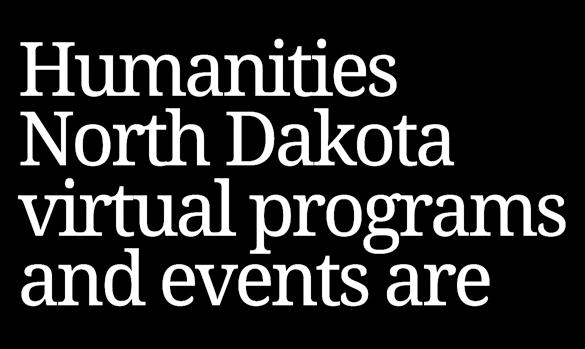HUM NITIES



THE GRAY MATTERS ISSUE
02 ALGORITHMIC ART by Ganapathy Mahalingam
08 PERSONAL DIGNITY: A TRIBUTE TO THE WORK OF JOHN CROSBY AND LINDA ZAGZEBSKI by Anthony T. Flood
14 THE BEAUTIFUL COUNTRY AN INDIGENOUS GEOGRAPHY by Dakota Wind Goodhouse
18 HOW TO ADULT: A BRAVE CONVERSATION by Dennis Cooley
26 HOW LOCAL SCHOLARSHIP CAN HELP: BUILDING BETTER KNOWLEDGE ABOUT IMMIGRANTS AND REFUGEES IN WESTERN NORTH DAKOTA by Karen Hooge Michalka

30 HUMANITIES CHAUTAUQUA by George Fein
38 THE PRINCIPAL AND THE PRESIDENT: DINING AT THE WHITE HOUSE by Charles Everett Pace
42 CHAUTAUQUA & CHAT SERIES
HUMANITIES NORTH DAKOTA MAGAZINE is published by Humanities North Dakota.
To subscribe, please contact us: 701.255.3360 info@humanitiesnd.org humanitiesnd.org
Any views, findings, conclusions, or recommendations expressed in this magazine do not necessarily represent those of the National Endowment for the Humanities or Humanities North Dakota.
50 THE WRITE STUFF by Rebecca Chalmers
The Humanities North Dakota Magazine has been made possible in part by a major grant from the National Endowment for the Humanities: Democracy demands wisdom.
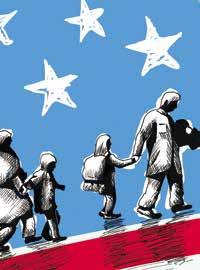


Humanities North Dakota (HND) thinks of lifelong learning in the humanities as a quest to find deeper meaning and purpose. We view our members as heroes, venturing forth into the landscapes of the mind and soul on personal missions of discovery.
According to Joseph Campbell’s seminal work on comparative mythology and psychology, The Hero with a Thousand Faces, the hero’s journey starts with a call to adventure. A herald summons the protagonist to an “awakening of the self” that, “whether small or great, and no matter what the stage or grade of life, the call rings up the curtain, always, on a mystery of the transfiguration.” The board and staff at HND believe it is our mission to serve as heralds on your mission. We do so, even though Campbell’s description of the mythological courier isn’t terribly flattering: “The herald or announcer of the adventure, therefore, is often dark, loathly, or terrifying, judged evil by the world; yet if one could follow, the way would be opened through the walls of day into the dark where the jewels glow.”
As modern-day heralds, announcing opportunities to engage in transformative learning, we point out guides you can approach to aid in your quest for wisdom. These are the scholars at the heart of every HND program. As mentors they bring their expertise to bear on everything human beings have achieved, struggled for, and suffered from, across time and distance. From the facts of history to the fiction of literature, the humanities are encounters with the fundamental questions of human existence. All heroes must find their own answers.
Thank you for being our heroes! Godspeed on your journey!
Much heart, Brenna Gerhardt
Executive Director & Fellow Lifelong Learner
p.s. No journey is complete without companions. We hope you find ample opportunity to enjoy the company of fellow travelers along the way through in-person events or online class discussions. I know my lifelong learning journey has been enriched by those of you I’ve met along the way.
Dakota Wind Goodhouse, born and raised on the Standing Rock Sioux Indian Reservation, created this map with his own people’s place names.
Goodhouse has a B.A. in Theology and a M.A. in History, and is a PhD candidate in NDSU’s history program. He edits and maintains the history blog The First Scout. Follow him on IG @thefirstscout.
Algorithmic Art is a collection of works, all created in 2022, that explores the frontiers of using algorithms to create works of visual art. All the works in the show are created using the programming language Processing and image processing tools.
Each work’s narrative is the actual algorithmic code that created it. This algorithmic code is composed of elements that reveal a more conventional narrative within it, hidden and intermittently revealing itself. Taking its cue from the ancient Indian system of Katapayadi, where numbers are assigned to letters, and computations are performed through text and poetry, this process of creating visual art explores symbol systems in a critical new way as well as how they can be processed using multi-layered techniques to create meaningful expressions of visual art.
Unlike conventional narratives that evoke meaning, these symbolic narratives actuate the creation of visual works of art. Then a conventional discourse emerges for the visual work that has been generated.
List of works:
1. proportional cascade
2. pourquoi Jessica (refined) 1
3. pourquoi Jessica (refined) 2
4. piety
5. da te tum ta
This a playful exploration of the proportions in the musical scale as a cascade of shapes. size(3000,3000); background(0); for (int i=0; i<500; i+=5) { fill(188, 175, 207); ellipse (random(height), random(width), i, i*1.732); fill(83,86,90); ellipse (random(height), random (width), i, i*1.414); fill(254,221,0); ellipse (random(height), random (width), i, i*1.5); fill(255); ellipse(random(height), random (width), i, i); fill(255,0,0); ellipse(random(height),random(width),i,i*0.5); };
saveFrame(“proportionalCascade.jpg”);
These symbolic narratives actuate the creation of visual works of art.
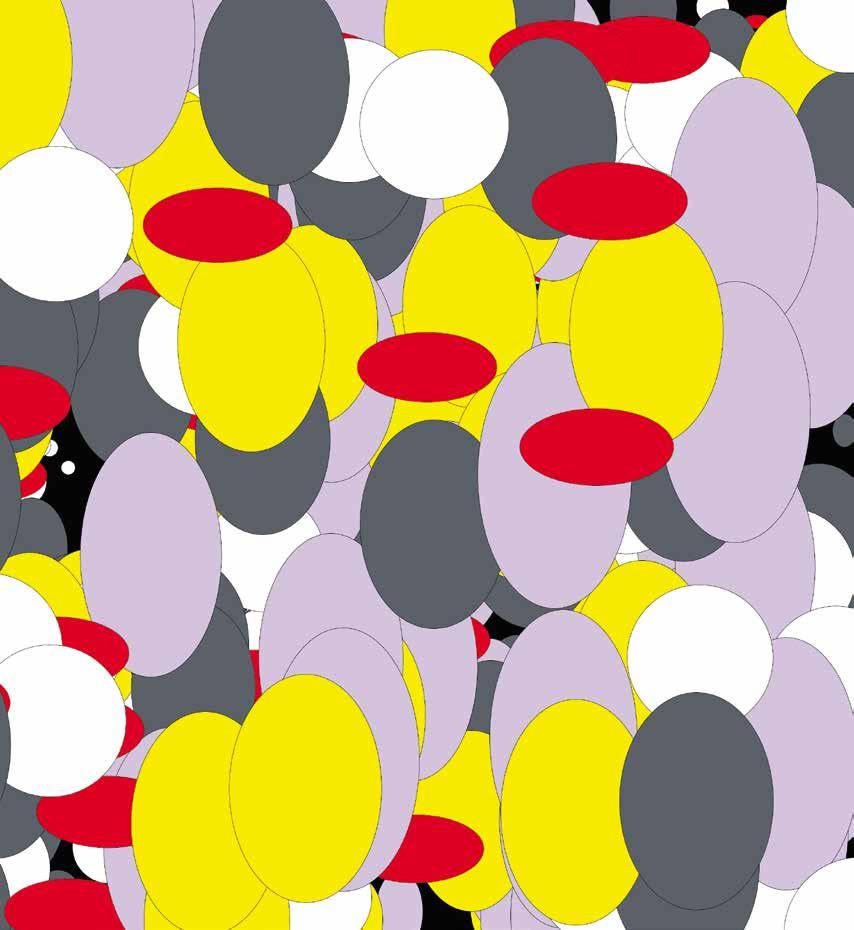
1 & 2
These two pieces are a tribute to North Dakota artist Jessica Wachter and reflect transformations based on algorithms and image processing.
PImage img; int jessica=10; int wachter=23; float art=5.0; size (3000,3000); background(0); img = loadImage (“jessica4.png”); for (int x = 0; x <= height; x += jessica) { for (int y=0; y <= width; y += wachter) { rotate (art); translate (jessica, wachter); image (img, random(x), random(y)); art += 10; }}; saveFrame(“pourJessica.jpg”);
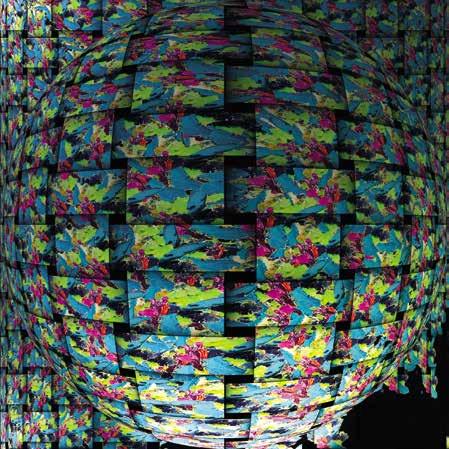
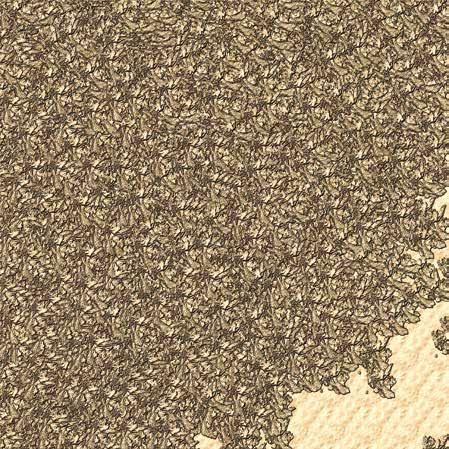
This algorithmic piece is a tribute to the painter Piet Mondrian. It takes his name in a poetic form and is a paean to his minimalist piety.

size(3000,3000); background(255); for (int i=0; i<=height; i+=(height*0.2)){ fill(255,0,0); rect (0,random(i),random(i),random(i));} for (int i=0; i<=width; i+=(width*0.3)){ fill(255,255,0); rect (random(i),0,random(i),random(i));} for (int i=0; i<=(height/2); i+=(height*0.1)){ fill(0,128,0); rect (0,random(i),random(i),random(i));} for (int i=0; i<=(width/2); i+=(width*0.1)){
fill(0,0,255); rect (random(i),0,random(i),random(i));} fill(0); for (int i=0; i<=width; i+=(width*0.2)) { rect (random(i),0,random(50),height);} for (int i=0; i<=height; i+=height*0.2){ rect (0,random(i),height,random(50));} rect(width-15,0,15,height); rect (0,height-25,width,25); saveFrame(“mondrian.jpg”);
The work’s narrative is the actual algorithmic code that created it. This algorithmic code is composed of elements that reveal a more conventional narrative within it, hidden and intermittently revealing itself. Taking its cue from the ancient Indian system of Katapayadi, where numbers are assigned to letters, and computations are performed through text and poetry, this process of creating visual art, explores symbol systems in a critical new way, and how they can be processed using multi-layered techniques to create meaningful expressions of visual art. The title of the artwork is a musical play on the words date (da te), datum (da tum) and data (da ta). All these types of information are part of the algorithmic code that generates the artwork. All the information in the code that generates the artwork are pertinent to North Dakota State University. The algorithm is implemented in the programming language called Processing. l
GANAPATHY MAHALINGAM is a Professor of Architecture at North Dakota State University. He has been a resident of North Dakota for nearly 29 years and can be considered a native Fargoan. Ganapathy has a wide-ranging interest in the arts, comprising architecture, visual art, music, poetry and philosophy.
int ndacAge=70; int ndsuAge=52; int doctoralDegrees=52; int undergraduateDegrees=146; int graduateDegrees=87; int certificates =210; size (3000,3000); background(0); fill (0,102,51); for (int y = 0; y <= height; y += ndacAge) { for (int x = 0; x <= width; x += ndacAge) { ellipse (random(x),random(y),random(ndacAge),random(ndacAge));}}; fill (173,216,230); for (int y = 0; y <= height; y += ndsuAge) { for (int x = 0; x <= width; x += doctoralDegrees) { ellipse (random(x),random(y),random(doctoralDegrees),random(ndsuAge));}}; fill (255,204,0); for (int y = 0; y <= height; y += ndsuAge) { for (int x = 0; x <= width; x += ndacAge) { arc (random(x),random(y),random(undergraduateDegrees),random(graduate Degrees),radians (doctoralDegrees),radians(certificates));}}; saveFrame(“datetumta.jpg”);

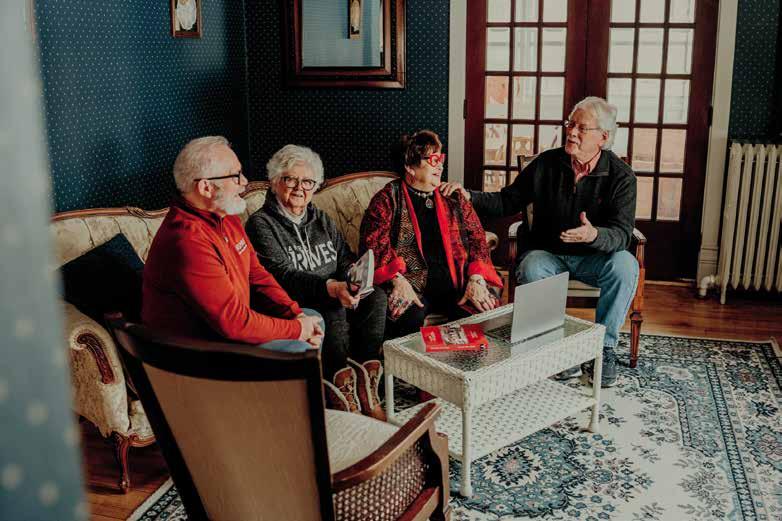


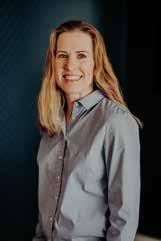
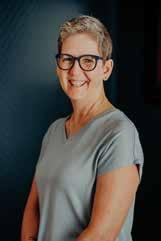
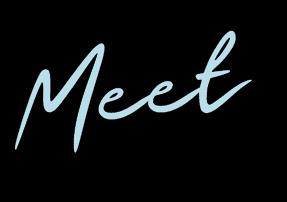
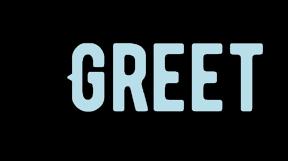

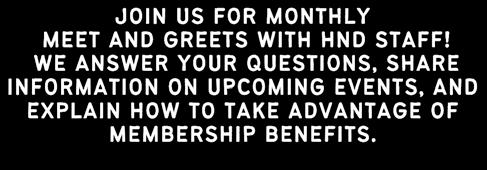
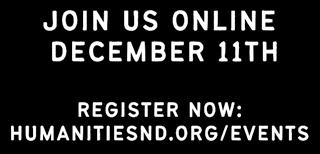
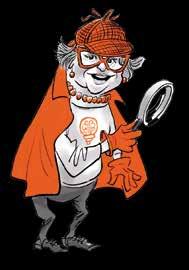





What does it mean to say that each human being is a person, and what makes a person different from everything else? These questions, raised by John Crosby and Linda Zagzebski, have framed in a substantive way the horizons of my philosophical life. As a student of both thinkers, who are both now retiring from the teaching side of the profession, I wish to take a moment to honor them by offering a glimpse into their insights. I will begin by proposing a couple of general thought-experiments that aim to motivate the issues both thinkers address, proceed with a brief history of the intertwined notions of person and dignity, and then turn to the thinking of Crosby and Zagzebski.
Reflecting on how and why we value and love people in comparison to other kinds of things is a practical way into thinking about the nature and dignity of personhood. Suppose you are reading the newspaper, and I walk by, grab it, tear it up, and throw it away. It is reasonable to suppose that you are going to be annoyed at and upset with me. I destroyed something that you consider, at least in some small way, valuable. To make it up to you, I go out, get another copy of the newspaper, and give it to you. You still are going to be put off by the whole situation, but your demand for restitution should be satisfied—I have replaced
what I took from you. This little scenario raises the question of why another copy serves as fair recompense, for the destroyed object is gone forever. Regardless of what is offered in its place, you will never get the original back. The short answer is that we do not value such things as newspapers in terms of their individuality but, rather, only for their replaceable or shared content. One copy of the paper is as good as any other. In a real sense, whatever interest we have in the individuality of the thing is a by-product of our primary concern for the shared content, and we value the individual copy merely as a means of accessing the content. However, this valuation does not apply with persons—at least not in its entirety. If we lose a loved one, no human being, no matter how similar, will ever serve as an adequate substitute. We love our spouse, children, friends, etc. in a real way because of their individuality, which is why they cannot be replaced.
Consider another thoughtexperiment: imagine that you get engaged to be married. It is very likely that you will be asked “What makes you think this person is the one for you? What makes this person special? (and finally) Why do you love this person?”
Depending on who is asking, these questions might put you a bit on the defensive—as if you have to justify or prove that you are making the right decision. You proceed to
We love our spouse, children, friends, etc. in a real way because of their individuality, which is why they cannot be replaced.
make a case that this person, out of the pool of so many possibilities, satisfies the criteria as the right choice and worthy of the ultimate commitment of love. You are probably going to answer by offering a list of loveable qualities: Billy is smart, caring, kind, funny, handsome, hard-working, and on and on. However, qualities are repeatable and replaceable, both individually and in combination with other qualities. Lots of people are smart, caring, kind, etc. These qualities cannot be the full explanation of why you have this singular love for Billy.
One might suggest it is merely because you have a history with Billy but not with other similar people. Perhaps, but this answer does not seem true to experience, as he does not seem interchangeable with the other people. Connecting this to the previous reflection, Billy’s individuality is crucial to your love for him. Your love extends beyond just the qualities and goes to that which makes Billy a unique person, distinct and irreplaceable by anyone else. The question of why you wish to marry this person sheds light on a complexity about persons, their value, and why we love them. Crosby and Zagzebski’s analyses seek to explain this complexity and offer a clearer way of thinking through these sorts of things. I will frame their thinking by first presenting a very brief overview of the history of personhood and dignity.
The cradle of western philosophy lies in the ancient Greek world, particularly in Athens. Socrates, Plato, and Aristotle asked questions about human nature and developed sophisticated accounts articulating what it is that makes us human beings. Aristotle famously defines us as “rational animals,” meaning that we share the general physiological and biological characteristics of other living things, but we also have specific rational powers and characteristics, such as self-knowledge, deliberate action, sophisticated language, and the like. Particular
human beings are just that—particular beings who have human nature and thereby exhibit these potentialities and abilities. Insofar as general human nature is valuable, then an individual instance of that nature also shares some of that same value.
The word “person” became the preferred way of referring to individual human beings. The term itself is taken from a theatrical context— actors wore masks to convey different characters and personalities. The Latin word for mask is persona. Roman law picked up on the term and used it to convey aspects of citizenship. Within theological debates regarding God as a Trinity and Christ as a being with two natures, thinkers adopted and adapted the term “person” to convey these relationships. Drawing from this usage, the sixth-century philosopher Boethius offers what becomes the standard definition going forward: a person is an individual substance of a rational nature. Notice that personhood is not tied explicitly to human nature but to any rational nature. Human beings are persons, but there can also be non-human persons.
The thirteenth-century thinker, St. Thomas Aquinas, insists that personhood signifies what is most perfect in all of nature by reason of dignity. In the eighteenth century, Immanuel Kant defines the value of dignity in comparison with another kind of value, namely price. He remarks that dignity is a kind of value wholly distinct from price. In the case of a thing whose value is measured by price, there is always something that in principle can be adequately substituted. The worth of the thing is determined, in effect, by practical, economic considerations. We may call things “priceless,” but we usually do use this term literally. Our great-grandmother’s china cabinet may be “priceless,” but if someone were to offer us twenty million dollars for it, we would sell it in a heartbeat. Dignity, on the other hand, is a value incommensurate with price. There simply is no adequate substitute for this condition or attribute.
A spouse, child, friend, etc. is priceless in a literal manner—there simply is no other thing, collection of things, or amount of money that could serve as an adequate substitute. In other words, a person is irreplaceable and not interchangeable with anything else—not even other persons.
In the moral sphere, Kant formulates the Principle of Ends, namely that it is wrong to treat persons as a mere means to one’s own ends; persons are ends-in-themselves. Because human persons have dignity, there are moral implications concerning how they should and should not be treated. These philosophical developments have had a sizable influence on how the broader world thinks about these issues. In the political sphere, for instance, the connection of dignity to action is usually expressed in terms of rights. For instance, the Preamble of the United Nations “Universal Declaration of Human Rights” begins with “Whereas recognition of the inherent dignity and of the equal and inalienable rights of all members of the human family is the foundation of freedom, justice and peace in the world.” (Obviously, one could say much more on the development of these ideas, but this suffices for our present purposes.)
In The Selfhood of the Human Person, Crosby explores what it is about the human person that accounts for dignity. His account focuses on two aspects: incommunicability and subjectivity. Communicability, in the metaphysical sense of the term, suggests the ability of a nature or a quality to be repeated or multiply instantiated. All squares are squares insofar as they somehow share a common/communicable nature. Moreover, if all particular squares were destroyed, that destruction would not destroy squareness— particular squares could exist again in the future. Communicability at the general level allows for repeatability at the particular level, which in turn is why such things can be adequately replaced.
Incommunicability, by contrast, conveys that which is unique and individual as such. It cannot be repeated or replaced. All individual things have incommunicability as individuals. However, what we value about the vast majority of things is not their individuality but their communicable nature. To use the earlier example, we value the copy of the newspaper in our hands, but what we value is its ability to convey common content—any copy of the same edition will do just fine. We do not really care about the individuality of the newspaper, which, again, serves merely as a means of expressing the communicable content. Persons, though, are different. We do not value our friend just because she is a human being; rather, we love her as an individual. We love her individuality as such—it is not just a means of expressing the communicable content of human nature. Our friend, in a real and substantive way, is unique and irreplaceable. This is why loss of a friend leaves a void that cannot be filled with another “copy” of human nature.
800-338-6543
info@humanitiesnd.org humanitiesnd.org
Crosby observes that a key distinguishing mark between the incommunicability of nonpersonal things and personal incommunicability is subjectivity. Each person has a unique interior life—their own first-person conscious experience of the world and themselves. Put simply, each person is a unique subject. We, of course, first experience this in ourselves, but love and friendship tend to give access to another person’s self-experience. Crosby remarks that it is not until we sympathetically enter into the other person’s subjective self-experience—experiencing a person as she experiences herself—that we truly
Each person has a unique interior life their own first-person conscious experience of the world and themselves.
experience the other precisely as person.
To summarize Crosby’s thinking, incommunicability and subjectivity are vital to what a person is. We can love humanity with all its marks and potentialities, but the love of persons is inherently a love of individuals. Moreover, the dignity of persons springs from each one’s subjective self-experience and irreplaceability as rooted in incommunicability.
Zagzebski, a prolific author best known for her work in virtue theory, treats the nature and value of personhood throughout many of her inquiries. She explores the subject of dignity in several of her works, most recently in The Two Greatest Ideas: How Our Grasp of the Universe and Our Minds Changed Everything. She, in part drawing from Crosby’s investigations, affirms that persons have an incommunicable subjectivity. She attends to these considerations by centering on two sources of value in human persons. In effect, the term “dignity” is more complex than at first glance, as we can use it to speak to two distinct kinds of value. Interestingly, the values themselves cannot be accounted for in the same way: one is infinite value, which is qualitative and comparable, while the other is irreplaceable value, which is non-qualitative and incomparable. She contends that human beings, due to their human nature, are infinitely valuable. In other words, due to human nature, each particular human being has great value.
Let us use Aristotle’s definition of human nature as rational animals to show how this concept works. Rational animality is more valuable than, say, bacterial nature. Consequently, particular human beings have greater value than particular instances of bacteria, all else being equal. Moreover, we can employ this metaphysical claim as a premise within our ethical reasoning. Thus, it is permissible, if not at times obligatory, to use antibiotics to kill bacteria to improve the life of a
human being because human nature has greater value than bacterial nature. Human beings are valuable because they are human beings, or to put it in Crosby’s terminology, we are valuable due our “communicable” content. However, the value, infinite or otherwise, of the qualities of human nature cannot be the source of incomparable, irreplaceable value. This is the case for at least two reasons. First, “infinite” can be compared with “finite,” and infinite is better than finite. Second, as we have been discussing, human nature is eminently communicable and human beings repeatable—that is the nature of natures. In fact, any quality, any qualitative mode of being is repeatable and therefore replaceable. So, assuming persons have infinite value, the source of this value cannot be the whole story of dignity, as infinite value is qualitative by nature.
Looking at this from the opposite perspective, persons also have irreplaceable value. Since the value of irreplaceability cannot be grounded on what is repeatable, and natures and qualities are inherently repeatable, the ground of irreplaceability must be something non-qualitative. Zagzebski points to the subjectivity of the person, specifically and inherently irreducible, as the key non-qualitative part of us that explains irreplaceability. By irreducible, she means that our experience of the world is inherently our own—it is inescapably first-personal. It seems evident that human beings experience things very similarly, but your experience is yours and mine is mine—neither of us can reduce our experience to those of others. As Crosby notes, we can sympathetically enter into another person’s subjective life, but we cannot literally have their experience.
To summarize Zagzebski’s account, dignity can be thought of as expressing both infinite and irreplaceable value. Yes, we are valuable because we are human beings by virtue of having human nature, but that is not the full story; each of us is valuable also because each of us is a unique self—
there is no other single thing, collection of things, single human being, or collection of human beings that can replace any of us.
To return to the question of love, why, then, do we want to marry Billy? Yes, because of the long list of his good qualities. These might even have an infinite value in themselves, but they are also all very much repeatable. Many people could fit the bill. However, he is also an individual—not just an individual who expresses qualitative modes of being, but an incommunicable, non-qualitative self. Of course, we do not want to drive too great a wedge between a person and her qualities. Both Crosby and Zagzebski speak to this in their fuller accounts. However, the point is that qualitative modes of being do not capture everything and probably not even that which is most significant in terms of why we love others and how we account for their dignity.
To conclude, if there were ever topics whose importance is always both perennial and timely, no two would rank higher than personhood and dignity. Of course, this does not mean that they are easy to grasp. Famously, St. Augustine once remarked that he knew what time was, until someone asked him what it was. Human personhood, dignity, and personal love are like that, too. This is why I am grateful to the work of John Crosby and Linda Zagzebski. They offer great insights, helpful distinctions, and compelling accounts on these and other topics that have benefitted me and many others and, I hope, many more to come. l
ANTHONY T. FLOOD is a Professor of Philosophy at NDSU. His research interest focuses on the themes of love and friendship in the thought of Thomas Aquinas. He resides with his wife and three children in Moorhead, MN.
There is no other single thing, collection of things, single human being, or collection of human beings that can replace any of us.

 by Dakota Wind Goodhouse
by Dakota Wind Goodhouse
My name is Dakota Goodhouse. I often wondered if I would ever see a map with my own people’s place names. I’m in my forties, and I realized if I ever wanted this resource I had to make it myself. I needed the resources, too. The people at The Decolonial Atlas got me started, but it was Bob Petterson and his large, free, textless geography of North America that made me want this resource free and available to the public. I am grateful to my grandparents and extended relatives who shared places with me, too.
The Corps of Discovery called the source of the Missouri River “The Three Forks.” The Lakhota people also believe that this site is the source of this great water, but disagree where the river ends. The Lakhota know the Three Forks as Mnithanka, or “The Great Water.” When the one river leaves its headwaters, the Lakhota call it Mnisose, or “The Water-Astir.”
The Water-Astir flows through the landscape in a great sinuous line. The Lakhota observed that where other streams converged with The Water-Astir, the water swirled. These swirls kicked up sediment and contributed to the river’s brown muddy appearance. It was a dangerous river. The only safe crossings lay upstream from each confluence.
Lakes and rivers live and breathe. Every kind of water has spirit.
In the spring, the Lakhota broke camp and moved from the floodplain of the Missouri River to the high plains. Throughout the summer they moved from headwater to headwater. Sometimes they camped at the forks of confluences for trade. Winters were the longest season, and so they prepared for the following winter all summer. They celebrated winter’s return with a snowshoe dance at first snowfall. They wintered on the forested floodplain. In the heart of winter they drew water from beaver holes in the ice; they gathered red willow to mix with their tobacco. In late winter, or early spring, the Dakhota tapped maple trees for sap; the Middle Dakhota tapped white birth for sap; the Lakhota tapped boxelder for sap.
The creation story of the Ocheti Sakowin, the Seven Council Fires (i.e. “The Great Sioux Nation”), recalls that Inyan, The Stone, drew his own blood forth from his veins, the very water of the world, so that life could begin. All that lives, breathes. Lakes and rivers live and breathe. Every kind of water has spirit. The spirit of water the Lakhota call Wiwila. The flowers, grass, and trees that grow along the water have spirits, too, which they call Chanotila. The Lakhota say that the stone lives and breathes, too, and the spirit of stone they call Tunkan.
On the Great Plains, the Mnisose flows southerly. The direction this stream flows informs the south-oriented worldview perspective of the Ocheti Sakowin. All but one river in the landscape flows south. The Red River of the North. Inktomi, the Trickster, convinced this stream to flow in the opposite direction. But south, that is the direction the spirit goes when its journey here is done. The Mnisose is reflected in the heavens in the Spirit Road, or the Milky Way. Death is the great river that separates one shore from the other.
The Mnisose meanders across the vast open plains. Many rivers converge with it. Many Ozhate at every confluence. So many places to trade resources with other peoples. Sometimes conflict broke out, but many times, too, did people adopt a former enemy in the beautiful Making of Relatives Ceremony. Oftentimes, young men and
young women found love in a former enemy and married.
At one great confluence, where the Haha Wakpa, or Waterfall River (i.e. the Mississippi River), it is the Ocheti Sakowin perspective that the Haha Wakpa converges with the Mnisose, not the other way, and the great Mnisose flows even more directly south. When this great river reaches the end of its journey, it joins a great water they call Mnithanka, the Great Water, better known as the Gulf of Mexico.
For the Lakhota north of the Cheyenne River, the new year came in spring when the ice broke, when the geese returned, when the trees budded, and when the herald of the new year, the western meadowlark, sang aloud across the open plain, “Oiyokipi! Omaka Techa!” or “Take pleasure! The New Year is Here!” Even the wind that blows across the open plain in spring is more than just a spring wind. No, the Lakhota call it Niya Awichableze, or “The Enlightening Breath Upon Which All Life Returns.”
Aside from the vast open plain, other features of the landscape are rolling hills, plateaus, and broud coteau. The Lakhota have the phrase Pahayata, or “To Go To The Hill.” It can reference scouts ascending a summit in search of signs of Tatanka, the Great Ones; it can mean that an individual is going on a vision quest and is called to take oneself to a summit.
The Lakota have many names for a landscape. The Little Missouri River Country for example may be called Makoche kin Chansotka Wakpa, or the Country of the Towering Tree River; it might also be called Makosica, or the Pitiful Country. Citizens of North Dakota are inclined to call this same sacred landscape Theodore Roosevelt National Park, or the North Dakota Badlands.
A country that is drained by one main stream is named for that stream. The Lakhota might even have more than one name for a stream. They call the Little Missouri River by another name, Wakpa Chan Soka, or the River of Thick Timber.
Just as headwaters, lakes, rivers, summits, ranges, and conflicts might be known by more
than one name, so, too, do the Ocheti Sakowin know the vast open plain by more than one name. They call it Makoche Waste, or the Beautiful Country; they call it Makoche Luta, or the Beautiful Red Country; they call it Makoche Channupa, or the Land of the Sacred Pipe; they call it Makoche Owanase Tanka, or the Land of the Great Hunt; they call it Wanbli Gleska Tamakoche, or the Land of the Spotted Eagle; they call it Oblaye Makoche, or the Plains Country; they call it Makoche Ocokanhe, or the Land in the Middle; they call it Untipi kin El, or the Land in Which They Live.

The land is shaped by wind. The language of the indigenous peoples was shaped by the wind, too. The wind is part of the culture. “Taku sica
owas’inla kahwog iyanyin kte,” or “All the bad things are blown away with the wind.”
Is the Great Plains that the Ocheti Sakowin know so different from the one you know?
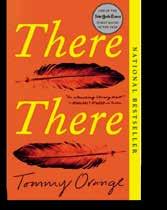
Welcome to the Land of Sky and Wind. l
DAKOTA WIND GOODHOUSE was born and raised on the Standing Rock Sioux Indian Reservation. Goodhouse has a B.A. in Theology and a M.A. in History, and is a PhD candidate in NDSU’s history program. He edits and maintains the history blog The First Scout. Follow him on IG @thefirstscout.

Even the wind that blows across the open plain in spring is more than just a spring wind.
 by Dennis Cooley
by Dennis Cooley
Socrates said that “An unexamined life is not worth living.” His claim is plausible–and might be a moral imperative when people are losing touch with democratic values and when social strife abounds. Given what many of us are seeing happen to our neighbors, to community, and to our country, this advice is right on target for the here and now.
Most pithy advice sounds really good to the ear, but, in general, practical concerns must be considered to turn a saying into action. What does the quote actually mean? What does it require us to do in practice? In this particular case, are all life’s aspects worth evaluative effort? As any reasonable person knows, some things are so trivial that to spend time examining them is a gross misuse of reason, a condition which makes us a unique species, able to conceptualize new realities and the methods to bring them about. Delving deeply into why one likes a nice slice of onion on a liverwurst sandwich, for example, would be far less valuable than looking into whether one’s valuation of others based on perceived conditions of race, sex, age, or other identifiers can ever be morally legitimate. Our hidden biases provide an excellent area for exploration, especially if doing so helps us to become better people. We can then formulate some sort of plan in order to manage–if not eliminate–those flaws and the questionable actions they cause.
Although people’s belief systems do not tell the entire story of who they are, beliefs certainly can say a lot about their identities and lives. Thus, beliefs give us a good place to begin the examination that Socrates suggests for a life worth living. It should go without saying that informed beliefs are much better than misinformed beliefs when it comes to making our lives
flourish. If we believe in baseless conspiracy theories created by anonymous internet writers, for instance, then we might shoot up a pizza place trying to find an imaginary pedophile ring.
Greater accuracy and exposure to what is real, on the other hand, helps us to analyze situations more precisely, concisely, and completely. It enables us to separate reality from illusion–and delusion–when it comes to identifying actual problems, their root causes, and their potential solutions. It enables resources to be allocated to the improvement of both individual and societal lives. It prevents the enshrinement of tribalism and the Us-versus-Them thinking that unravels the social bonds essential for us to be We the
People. For these and other benefits, there is at least some good reason to think that we are obligated to scrutinize very carefully what we believe since those propositions impact our very existence.
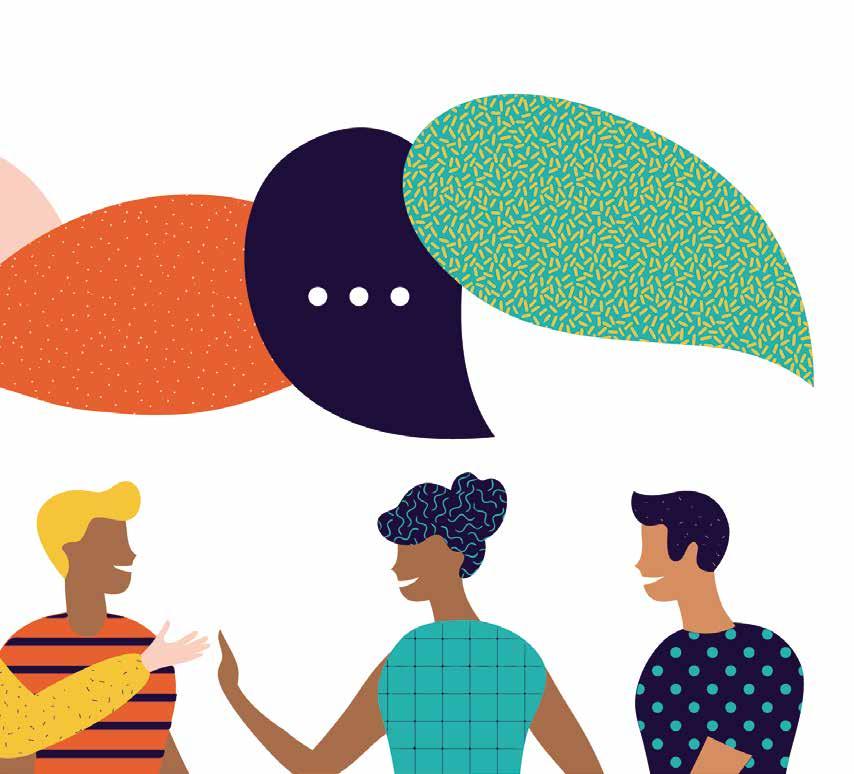
Our hidden biases provide an excellent area for exploration, especially if doing so helps us to become better people.
If examining our lives were easy, most everyone would have done it by now. Any rational or reasonable person who is interested in having a better existence would automatically be motivated to invest a minor amount of resources for what would likely net big gains to individual and social worth. Think of it like a dieter who must merely give up a food that has already fallen out of favor to drop a few pounds. So, too, would any prudent person check beliefs for falsehoods and then replace them with beliefs that far better reflect reality. In fact, the big gain with little pain would be so rewarding that it would soon become second nature. We’d be doing it all the time.
But the fact is that many of us rarely, if ever, examine our lives in the way that Socrates mandates. One problem: such an examination both challenges and threatens our sense of ourselves. Consider something that has likely happened to each of us. Moral failures in others sometimes require us to create a teachable moment, especially if we are responsible for their moral development, as we are for our children who need a lesson. Instead of viewing this moment as our attempt to help identify what was wrong and how to make amends, our child perceives in the questioning of his judgment and behavior that we have cast aspersions on his
character and actions. He thinks we are saying he is a bad person and lashes out as a result. It hurts his self-esteem and selfvalue.
What does this reaction mean for self-examination? Rigorous self-examination is difficult, in part because the beliefs, values, and principles under inspection are usually central to the core of who the person thinks he is. That is, they are part of how he identifies himself as the unique and valuable being he is in his natural and social environments, and those are now under critical scrutiny. Any attempt to alter them is viewed as an attack on his self-value. Even if they are merely important to his identity, having these characteristics and deeming them defective enough to need replacement implies that the person is not as good as others in his social circle and the community. If the person examining his life believes that these are his essential characteristics, then it is even more intimately tied to his existence and value. That is a hard reality to face. These threats to his value and existence are why there is so much resistance, fear, and anger when someone is challenged on issues linked to his perception of his core being. And that is something no one wants to happen – it hurts too much.
There is a different threat as well. Being a member of a herd is a natural and learned desire of most, if not all, people. Homo
sapiens result from a long line of evolutionary adaptations. We are social animals who naturally want to and work to belong to a group for the benefits that the group confers. And such membership is easiest when the group is a bunch of people just like us. In our complex society, few of us are wholly self-sufficient. Some of us like to think of ourselves as wholly self-made, but that idea is a myth. We all stand on the shoulders of others and their accomplishments. We need others in order to obtain the basic essentials of life, such as food, shelter, and emotional support in positive relationships, but also for those things that make life better but are unnecessary–although they might sometimes seem to be essential to those hooked on their convenience. All of these goods require us to use the work of others, as well as cooperating with them in various interdependent, complex relationships. Without them, our lives would be nasty, brutish, and short. As prudent people, therefore, we need to be solidly ensconced in the herd.
Challenging one’s core beliefs can threaten that herd membership. To be a perceived and actual group constituent requires a sufficient and necessary number of shared beliefs, values, principles, and lived experiences with other members. As anyone who has migrated into a new culture or society can readily attest, there
is automatic bonding between people when the newcomers are deemed to be “one of us” by the area’s natives. Being one of us might be based on physical appearance, but it also depends on how people interact with each other. I, for example, was considered to be rude when I first came to North Dakota because I did not understand that the length of time between finishing one sentence and beginning the next here is different from where I had lived before. When a North Dakotan was using a herdspeech convention, I mistakenly thought it was my turn to keep the conversation flowing. Often, I began to reply to a person before she had finished her entire line of thought. The rudeness was unintentional on my part. The social rules where I’m from have very short pauses between the end and beginning of sentences. Not responding quickly enough to someone from western New York appears to be dismissive or as if we’ve disengaged in the conversation. (I’m pleased to say that I’ve learned this speech rule, although for some reason, I still might be considered to be discourteous by being a very direct speaker in the land of indirect communication.)
Besides language conventions, there are myriad other ways we use to tell if someone is in-group or outgroup: their dress, diet, and etiquette can also signal
differences. And if one or more of these are detected by in-group natives, social and psychological barriers can be constructed to keep the outsider from fully entering into that herd.
To raise questions or show differences by critically examining one’s beliefs might represent some perceived threat to the group, especially if the beliefs are essential to herd membership. For newcomers to the community, it proves that they are out-group. Worse yet, for in-group people, obeying Socrates’s advice for these shared beliefs, customs, and psychological frameworks could very well banish the person to wander alone in a native land. There is, therefore, a strong incentive to peg one’s beliefs and values to the group’s, and never, ever, make waves by saying, “You know, I think we might be wrong about this.”
As Socrates did before him, John Stuart Mill argued that every person is obligated to scrutinize his values, beliefs, principles and any other psychological state influencing his worldly interactions and making him who he is. Mill thought that there were three types of beliefs that people could hold: wholly true, wholly false, partially true, and partially
false. The largest set contains beliefs that are partially true in one aspect and partially false in another. That shouldn’t surprise those living in the real world: we, as imperfect creatures with finite knowledge and information, do not often have the ability to know the truth and nothing but the truth about any proposition, especially the case if these beliefs are the complicated, entangled ones we find in the abortion, euthanasia, and other such debates. These issues involve a lot of unknowns and unknowables, which, of course, make it virtually impossible to get the entire truth precisely and completely right. Thus the prudent standard we should use for our empirical world beliefs is the probably and plausibly true with a small “t,” not the absolutely certain True with a large “T.”
Accepting our finite knowledge and infinite ignorance requires us to adopt “fallibilism.” Fallibilism is the motivating, critical-reasoning mental framework in which we know that we could be wrong even when we most strongly feel certain about something. Being a fallibilist is liberating: it makes adherents more humble and interested in examining beliefs. Instead of being overly confident and, therefore, not seeing a reason to question one’s belief, there is always the need to
We all stand on the shoulders of others and their accomplishments.
critically investigate everything we think. Instead of being overly worried that being wrong says something derogatory about our worth to ourselves or to others, it becomes more important to find out when we are wrong and to learn from the mistake. Truth is more important than ego and much more useful in general to achieve worthwhile goals because we know that being wrong is merely a mistake, not a character flaw signifying anything about us, who we are or how we should be valued by others who are in the same potentially dubious position.
For Mill, the best place to perform a thorough examination was in a democratic marketplace of ideas. In this realm, ideas are proposed and then critically reviewed for their strengths and weaknesses by many diverse people holding different beliefs, values, and principles. With honest brokers being involved in the process–and the dishonest ones as well– Mill thought that a position could more effectively shed itself of falsehoods and draw closer to the actual truth. One person’s lived experiences, for example, could act as a check on what is too theoretical and unlikely to be efficiently obtained and achieved in the actual world. In response to a mass shooting in a grocery store in a primarily
Black neighborhood in Buffalo, one activist demanded that the grocery store chain demolish its store and build a new one.
TOPS replied that it could not afford to make such a gesture, and it had already disposed of all the store’s contents and totally redesigned the store. More importantly, if the store closed, the underserved neighborhood in which it was located would lose its only access to a grocery store that others might take for granted. It would, in effect, create a food desert.
The marketplace’s buyers and sellers of ideas use criticalreasoning tools: the Principle of Charity and Questions of Meaning Come before Questions of Truth. The practical idea behind the latter is that it is a waste of time to try to determine if a claim is true or false without first knowing what the claim means. If a college instructor, for instance, makes remarks regarding his students being hot, then it is vital to find out how “hot” is being used here. If it merely means that the students are in a classroom with temperatures over 100 degrees, then nothing untoward is happening. In fact, the utterance hopefully indicates that the teacher thinks something should be done to help the students. If, however, “hot” is the
slang for finding the students attractive, then it might be time to have a serious discussion of appropriateness and what is involved in the teacher-student relationship–which should always be focused solely on learning and not dating.
The Principle of Charity is also useful in drawing closer to the truth, with the added benefits of respecting all speakers and their ideas and instantiating what free speech has always been intended to be and do. Although many conflate an idea’s source with the idea’s worth, even the worst people in the world can be right about something. This Principle recognizes that reality. It requires the strongest case be made for any claim or argument, regardless of one’s feeling about what that claim or argument is. It does so, in part, because a person could be wrong and the truth is more important than hurt feelings.
The Principle works in this way. First, each speaker is respected as a person with something important to say. This step helps evaluators focus on the ideas and not the personalities involved. After that, whatever is under market consideration should be fortified by making it as probable and plausible as possible. By creating only the best arguments, we don’t ignore real challenges by wasting time knocking down a strawman–which can, I admit, provide a kind of cheap satisfaction and, apparently,
Being a fallibilist is liberating: it makes adherents more humble and interested in examining beliefs.
does draw in a lot of revenue for cable news. Next, both the strengths and weaknesses of the strongest argument are identified and fairly weighted. Although this step would appear to be obvious, many of us tend to put our thumb on the scale in favor of those arguments and claims we favor. We neglect our positions’ weaknesses and overstate their strengths, while devaluing an opposing viewpoint’s plausibility and probability and overemphasizing its weaknesses. But this is not the way to seek the truth. Truth is about the facts–the latter make our beliefs true or false-and facts and truth do not care about a person’s feelings. Finally, the person engaged in the critical reasoning draws a conclusion based on the evidence alone. Is the argument proven on its own grounds and in comparison to competitors? Is the conclusion at least plausible and probable? If so, then, again, regardless of what one wants to be the case, intellectual honesty requires us to go where the evidence leads. If we are right, then we can go on our way knowing we have the information we need to make the best decisions and do the right thing in the circumstances. If we are wrong, then we acknowledge that, in part, by changing our beliefs to coincide with the more justified conclusions.
Over time in this dynamic, democratic marketplace, ideas, beliefs, mental states, and critical
processes would be refined until they were good enough to be useful in achieving the desired outcomes. Of course, the worth of a desired outcome would also have undergone the same democratic winnowing and improvement process to test its mettle.
My Grandpa Meyers once asked me if I knew the dirtiest word in the human language. Being a rather unworldly 14-yearold, I admit it was very, very intriguing to learn more. Although not titillating in the expected way, it turned out that the naughty word was “religion.” My grandfather explained that no other uniquely human endeavor had caused as much injury and suffering to people, animals, and the environment as those pursuing their religious beliefs, especially if there are two or more herds who each think that their god wants them to stamp out members of any competing religion. Making matters worse, many religious people use faith
alone to justify their beliefs and actions–not rationality, which concerns itself solely with going wherever the data takes us. Faith-based belief systems make it extremely difficult to change adherents’ perceptions because evidence does not have the authority it carries in the rational debate of an efficiently working marketplace of ideas. In fact, at times, there is a point of pride and superiority assumed by those who reject data in favor of pure faith, as has happened by both sides over COVID matters. In some cases, we might be justified in thinking that faith and membership in a religion is more central to our identity than being a rational person trying to find fact-based truths.
Let us pull out all the stops and examine an apparently innocuous religious belief using the Principle of Charity and Questions of Meaning. Of course, what is written here might cause a bit of controversy and even draw some ire. The intent of this exploration is not to spite anyone, but to show both how this process of examining one’s core beliefs, and therefore one’s life, works and to highlight
... no other uniquely human endeavor had caused as much injury and suffering to people, animals, and the environment as those pursuing their religious beliefs ...
how difficult it is to challenge “sacred cows” that form our central being and thinking processes.
We begin with the 1988 WWJD? fad. For those who do not remember, WWJD? stood for What Would Jesus Do? I’m not sure why it caught the fancy of Americans–much as pet rocks were a bewildering, big-ticket item in the 1970s–but it was impossible not to see someone wearing it on a t-shirt, wristband, or some other merchandise.
When this actual question is critically examined, a puzzle appears as soon as a Questions- of-Meaning-Comebefore-Questions-of-Truth approach is applied. In order to do what Jesus would do, it becomes necessary to know what Jesus was. That is, what were his essential characteristics that made him what he was? Assuming he existed–although there are religious scholars and historians who argue against it–was Jesus divine, and, if he was, what made him divine? There are a number of positions that have been posited and defended on this issue. The historical and religious views range from him being a Jewish member of Homo sapiens to being God, Himself. They include that he was both wholly a human mortal and wholly a divine entity,
at the same time. That option is far harder to handle than I want to take on here, so let us go for the two extremes in the range of answers.
Suppose, for the sake of argument, that Jesus was a mortal, finite human being. He would be a man who lived 2,000 years ago, spoke Aramaic, and had no conception of the world in which we now live. If this is true, then it would make WWJD? of little use to anyone who wanted to know the answer to questions never dreamed of 2,000 years ago. Our smart phones, internet, artificial intelligence, and other technology would baffle him even more than it does my and older generations. There would be no thought of inherent entitlements to anything, such as privacy. What would Jesus do? Probably be very puzzled–if not totally lost–by the massive changes that have occurred since his worldview worked. It would probably be better to ask for information of a neighbor with an Internet connection and the ability to tell credible from fantastic data sources.
Jesus as God has the same problem of not providing the guidance that people hoped–and actually may land them with a charge of blasphemy. In this interpretation, Jesus is the literal
child of God, an aspect of God, or God, himself. Any one of these being the case, then asking what Jesus would do is to ask what a god would do in that situation. But that is of little assistance to finite mortals lacking infinite knowledge, goodness, presence, and power found in the divine. We are manifestly unable to understand the situation in the manner an infinite mind with its infinite knowledge can. We cannot raise people from the dead, turn water into wine, and do other miracles that break or rewrite the laws of nature. Thus knowing what Jesus would do doesn’t much help any human being.
More troubling, if we think that we can act as a god would act, then we are in danger of being called out for hubris, if not being delusional. Some hearing us speak in this manner might rightly consider confinement in a place in which we cannot harm ourselves or others might be in good order. And, at worst, we should be wary of a lightning bolt from a clear sky or some other spectacular divine punishment that would cost a considerable amount of money to reproduce in an action movie.
The way to fix this quandary is to resort to the Principle of Charity. Those who were caught up in the movement seemed to be sincere about what they were doing: teens were using it as a tool against peer pressure. If they just did what Jesus did, then they would be better
We are manifestly unable to understand the situation in the manner an infinite mind with its infinite knowledge can.
people doing the right thing and, I assume, enjoy a thriving existence. The thoughtful among them were not attempting to emulate a 2,000-year-old Jewish man or a god. Rather, they were thinking along the lines of What Would Jesus Want Me to Do? (WWJWMD?) Although not as pithy as the shorter version, it is far more accurate to the intended purpose and outcome.
WWJWMD? becomes merely a form of Virtue Ethics with an Ideal Observer. A perfectly virtuous being with complete knowledge of all situations and ability to perfectly use its critical reasoning abilities would know the correct answers to what one should be and how one should act in each contextual circumstance. All that a finite mortal has to do is to behave as that virtuous person wants us to act in that situation and for the same reasons motivating that being. Although we might never fully know why we are obligated to exit and act in this way, whatever Jesus would want us to be and do has to be good and right because it is something deemed to have those statuses by the perfect judge. Given the very positive message provided in the New Testament, then that is likely to work out to being compassionate, eschewing violence, selfishness, and self-righteousness, bettering oneself by becoming more virtuous, loving and caring for one’s neighbor, and otherwise possessing excellences of
character and acting upon it all in a way that reasonable people would agree is an exemplary life. All one would need to add, perhaps, is regular examination of it and the beliefs the person living it holds.
In the history of Homo sapiens, it is unlikely that there was any particular moment in time when there wasn’t conflict and unnecessary pain and suffering caused by plain stupidity. Humans as imperfect beings, after all, can be saints, but they have proven themselves sinners in horrific ways. By critically examining our beliefs, especially those most central to who we are individually and communally, and how we act, as well as our overall life in the social and environmental contexts in which we live, there is a greater hope for We the People to survive the partisanship, tribalism,, and incivility currently being experienced. And hopefully to come out of the trial and to thrive. l
DENNIS COOLEY received his PhD in philosophy from the University of Rochester in 1995. His teaching and research interests include theoretical and applied ethics with a focus on pragmatism, bioethics, business ethics, personhood, and death and dying.
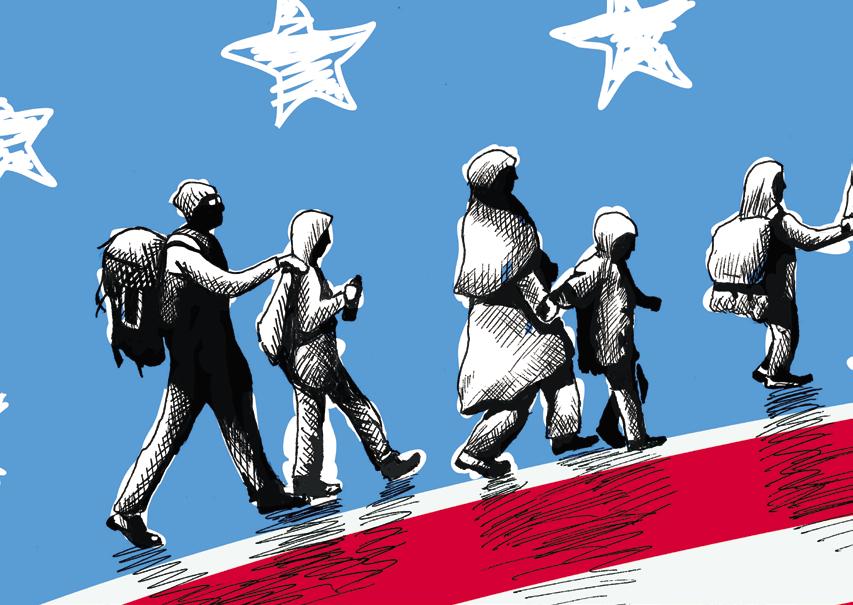 by Karen Hooge Michalka
by Karen Hooge Michalka
Large numbers of Afghan refugees began seeking stable places to land in the fall of 2021. The war in Ukraine has also created a diaspora of people desperate for a safe place to live and raise their children. Many of these refugees are making their way to North Dakota, a state with a proud immigrant past which yet seems ambivalent about its current openness to refugees and immigrants. How do we resolve this ambivalence, and what information do we use to make decisions about how best to allocate our resources, encourage the development of social trust, and create the economic and social conditions for a thriving community?
We live in an information era when innumerous facts and data are available to us at a finger’s touch. This knowledge can be used to establish justification for public policy, personal voting choices, and more, yet it can be difficult to know if the information we are drawing on truly represents our context and whether it is accurate and up to date. A region such as the northern plains often escapes national attention in many important debates and thus nationally representative surveys may not be completely accurate for understanding our setting. Personal anecdotes and experiences can be powerful, memorable, and influential, but they may also be completely inaccurate for understanding more pervasive local trends. To provide robust, well-researched information regarding our state, we need an increase in public scholarship, particularly for the western half of North Dakota, located farther from our research universities.

A problematic aspect of the current (mis)information age is that the glut of information is paired with a lack of clarity and accuracy of particular, sound information.
Thus, we can hear about the unique experiences and opinions of thousands of people within minutes, but we do not have a clear way of knowing how common, widespread, or accurate that information is. One local example of this kind of situation occurred in the fall of 2019 when Burleigh County gained national attention for addressing the question of whether refugee resettlement could continue. Though the commissioners voted 3-2 to allow refugee resettlement to continue, with yearly review, it created an intense discussion over refugees in a largely rural area. A town hall discussion brought over a thousand local residents to voice their concerns over refugees (and immigration more broadly) and their support for our local refugees, as well as speaking more broadly about these issues in the whole of the United States.
What kinds of information were drawn on as people shared their thoughts? One commonly used source of information was nationally representative surveys. These are powerful and important sources of information about the state of our nation, such as trends in public opinion, experience, or the hopes and fears of those who reside in this country. With a careful selection of respondents, nationally representative surveys, such as those run by the Public Religion Research Institute and Pew Research, can be accurate with even a relatively small number of cases. These surveys show that a strong majority of Americans support accepting refugees and believe that immigrants strengthen American society. However, while this information is true at a national level, applying these insights to a particular region or state, such as North Dakota, can lead to inaccurate and unreliable positions. With the need to welcome and integrate Afghan and Ukrainian refugees, among others, inaccurate data about public perception may lead to policies that weaken social trust rather than build it. A robust survey that accurately represents our nation as a whole may not have the analytical strength to zoom in closer.
On the other end of the spectrum, we find personal anecdotes and experiences that shape opinions are often widely shared and influential. A shocking or memorable story might carry more weight than the carefully researched and argued academic study. Repeatedly, in the 2019 county commission town hall, people shared their concerns and hopes regarding continued refugee resettlement, often based on personal experience or anecdote. These personal experiences may be indicative of larger trends, or they may be outliers. Without more context, it is impossible to know.
Where can we get this local-level context? The most reliable sources come from surveys, focus groups, and interviews that are built using the best research methods, conducted by unbiased researchers who are willing to follow the data as they are revealed, and disseminated in an understandable and accessible manner. These data must be current, relevant, accurate, and should come from trusted and trustworthy researchers, with any underlying purposes made clear.
It may be a comfortable assumption on the part of many people throughout the United States that research is primarily done for the purpose of scholars speaking to one another, or that it is commissioned by interested parties who want the aura of scientific rigor to promote their preconceived positions. And while it may be true in some cases, most scholars want their work to be accurate and to be useful to the local populations and communities in which they live. In many cases, the theoretical insights and data-driven methodology of sociology and other academic disciplines have failed to connect with a broader public. This situation, along with growing populism and distrust of expertise, means that the future of public scholarship faces unique challenges. It cannot stay in the ivory tower but must make creative connections with people, showing the usefulness of its approach. It is the duty of researchers to work to build community trust, and it is the duty of a civic-minded population
Inaccurate data about public perception may lead to policies that weaken social trust rather than build it.
to thoughtfully weigh this data as community members form opinions and live their lives.
Several current projects are looking at this potential shift, including one in which I am involved. This project, supported through Bismarck Global Neighbors and the University of Mary, is a needs-assessment survey of refugees, immigrants, and other arrivals from U.S. protectorates and territories. It represents one half of the full picture of understanding newcomers and their communities of reception. The goal is to publish a report, shared with the public, that can be used to develop policy proposals for the local, regional, and, potentially, state level as well as to promote an understanding of and appreciation for solidarity amid diversity. The project, an urgent need here in North Dakota, where generational memories of settler immigration still exist but where our local populace suffers ambivalence over current immigrant populations. If we lack clear, evidence-driven information about diversity and immigration, debates will only be able to rely on data that are too broad or too personal.
Good scholarship, such as that by Alejandro Portes and Ruben Rumbaut, has shown that immigrants bring many social and economic benefits to a region, but the research often overlooks the cultural isolation and distrust that can develop as a result. Building a community that values and welcomes refugees and immigrants and sees potential partners rather than competitors requires that we look seriously and soberly at real challenges that can develop. This attentive, open-minded approach requires good local studies and data.
Over the next months and years, we need research projects that bring world-class techniques when considering our local situations. We need to assess the needs, challenges, and opportunities that refugees, immigrants, and other newcomers face. We need to dive into the beliefs, histories, and social arrangements that can
contribute to the development of trust between old-timers and new arrivals. We need to uncover the social determinants of health that impact our physical, mental, and social well-being. We need this information to be shared widely–not just within academic circles, but with nonprofits, government agencies, and everyday residents, and we need an interested public.
A lack of good information can be the innocent result of the gap between robust, nationally representative studies and personal, local anecdotes, but we cannot allow ourselves to stay there. We need an increase in public scholarship, one that studies both our larger population centers and our rural countryside. Well-researched public scholarship is essential for the health of local communities, for our civic life, public policy, neighborly trust, and thriving cities and towns. l
KAREN HOOGE MICHALKA, PH.D., is an assistant professor of sociology at the University of Mary. Her curiosity and interest in the lives of those around her developed after she moved from her hometown of Munich, ND, to college outside of Chicago, two years spent in Mexico, and finally graduate school at the University of Mary. Her research and writing focuses on immigrants and communities of reception, especially as it relates to issues of cultural exchange, religious impulses, and community trust.
 by George Frein
by George Frein
Peeking through the curtains backstage, in the library’s multipurpose room, I could see it was a good crowd. Almost 200 people had come for tonight’s humanities program. I listened as the librarian made some announcements: the fiction book club would meet on Monday, fines for late returns would be waived until the end of the month, another Chautauqua program was scheduled for August. Then she introduced me: he was born in 1819, went to sea for the first time as a boy, published five sea books before writing his famous classic. Finally, came her cue for me to step out: “Ladies and gentlemen, please welcome Herman Melville.”
Pulling my coat collar up around my ears and with a little shiver, I begin: “Whenever it is a damp, drizzly November in my soul, whenever I find myself joining every funeral procession I come upon, I count it high time to get to sea and let the ocean work its magic in my soul.” I explain, “I write of mariners, renegades, and castaways, and to them I ascribe the highest dignity. Oh, not the dignity of kings and robes, but that august dignity that has no robed investiture. Thou shalt see it shining in the arm that wields a pick and drives a pike - a democratic dignity.”
My talk lasts just 40 minutes. Then the audience asks Mr. Melville questions for 20 minutes more. After that, the librarian introduces me again, this time as a humanities scholar with a long interest in Melville, and I take more questions.
Audiences ask Mr. Melville about Ahab, the tyrannical captain of the Pequod. I say that he suffered from monomania. He thought of one thing only, “wreaking vengeance” on the white whale that sheared off his leg. Asked why the crew went along with the captain, I tell how he infected them with his madness by nailing a gold Spanish doubloon to the mainmast, promising it to the sailor who
first sighted the white whale and sang out, “Thar she blows.” I tell how only the first mate, Mr. Starbuck, resisted: “Vengeance on a dumb brute that smote thee out of blind instinct, Captain Ahab, seems blasphemous.” I point out that Ahab’s answer reveals his character: “Mr. Starbuck, talk not to me of blasphemy man, [making a fist and clenching my teeth] I’d strike the sun if it insulted me.”
Out of character, I am asked: “George, where did Melville get his story about the white whale?” “What were his other sea books about?” “Why was MobyDick so long?” “What was Melville’s overall purpose?” “What does the whale symbolize?” “What makes Moby-Dick an American classic?” I answer the questions, but I also use this time to promote the humanities. I ask the audience questions and try to get a discussion going. I suggest how Moby-Dick raises philosophical and theological questions. Finally, I recommend other books by Melville and suggest a new book or two about his work.
I know how outrageous it is for me to go on stage and pretend to be Herman Melville. I know this even though I’ve read everything he wrote–novels, short stories, essays, poetry, letters. But, all that reading only made me want more. I wasn’t satisfied with his finished books. I wanted to get into his thinking process. So I spent months reading the books Melville bought and read himself. I found them in the rare books collection at Harvard’s Houghton Library. There, I held the very books Melville himself once held in his
I held the very books Melville himself once held in his hands. I read the notes Melville scribbled in the margins.
hands. I read the notes Melville scribbled in the margins. I soon discovered that he was a critical-minded reader. The margins of his books are crammed full of his arguments with the authors: Emerson, Hawthorne, Shakespeare, the authors of the Bible–God included. I was forced to read Melville’s marginalia slowly because his penmanship was almost illegible. But the result was thrilling. I could almost hear the man talking to himself as he read. I had gotten into his head. I listened to him think. Finally, with so much Melville in my head and ears, I turned to read the vast body of Melville criticism: history, biography, literary analysis.
Still, pretending to be Melville is outrageous, I know, but it proved to be rewarding. I got a unique chance to use what I had learned. Public audiences clearly enjoyed it. They played along with the fiction. They asked Mr. Melville probing questions. They asked good questions about Melville studies. They talked with me as if I were his latter-day personal friend.
show. My first performance was a practice program at a library, but, after that, my Melville traveled all across the Great Plains states for three summer seasons with six other writers from the American Renaissance. We pitched a big tent in a town park, filled it with 300 chairs, a good sound system, and a small stage. We invited townspeople to come hear from some of America’s most famous writers.
Now, thirty years later, I still hear each of those writers talking to audiences in the 1990s: listening recently to a two-faced politician, I hear Hawthorne telling the story of The Scarlet Letter and observing, “No man, for any considerable period, can wear one face to himself and another to the multitude, without finally getting bewildered as to which may be true.”
Reading poetry when I should be working, I hear Walt Whitman: “We don’t read and write poetry because it’s cute. We read and write poetry because we are members of the human race. And the human race is filled with passion. So medicine, law, business, engineering . . . these are noble pursuits and necessary to sustain life. But poetry, beauty, romance, love . . . these are what we stay alive for.”
The goal of the humanities was served: there was critical thinking about human nature, culture, and society. My Melville was as authentic as my scholarship could make him. Audiences seemed to learn something about themselves from their encounter with Melville. I sometimes think, after a particularly good show, that what we learned tonight about ourselves could not have been learned from anyone but Melville, telling stories and thinking out loud.
At the behest of the Humanities Council of North Dakota and for the Great Plains Chautauqua, I developed eleven different Melville programs in addition to the Moby-Dick
When a patriotic orator talks uncritically on July 4th about American exceptionalism, I hear Frederick Douglass speak: “What, to the American slave, is your 4th of July? I answer: a day that reveals to him, more than all other days in the year, the gross injustice and cruelty to which he is the constant victim.”
After reading a news story about women in public office, I hear Louisa May Alcott observe, “When women are the advisers, the lords of creation don’t take the advice till they have persuaded themselves that it is just what they intended to do. Then they act upon it, and, if it succeeds, they give the weaker vessel half the credit of it. If it fails, they generously give her the whole.”
Learning that a woman has just shattered another glass ceiling, I hear Margaret Fuller, the first woman to become a foreign correspondent: “We would have every arbitrary
The goal of humanities was served: there was critical thinking about human nature, culture, and society.
barrier thrown down. We would have every path laid open to women as freely as to men. If you ask me what offices they may fill, I reply–any. I do not care what case you put; let them be sea captains, if you will.”
When a friend tells me he is thinking about living off the grid, I hear Henry David Thoreau say, “I went to the woods because I wished to live deliberately, to front only the essential facts of life, and see if I could not learn what it had to teach, and not, when I came to die, discover that I had not lived.”
Watching a debate on TV about immigration, I hear Melville say: “Let us waive that agitated national topic, as to whether such multitudes of foreign poor should be landed on our American shores; let us waive it, with one only thought, that if they can get here, they have God’s right to come; though they bring all Ireland and her miseries with them.” And I hear the reason he gives for this: “America is not so much a nation as a world.”
As the above recollections suggest, what is unique about the humanities Chautauqua, and critical to its success, is the spoken word. When a Chautauqua program is successful, audiences remember what they heard, the way college students remember what they have read. The humanities, in school and out of school, work with texts: texts that are held in common, talked about together, analyzed, debated, compared with other texts, and tested for authenticity. All that work is easy for college humanities classes. Everybody gets the same reading assignment.
But no sizable, general, public audience can be assigned a book to read before attending most humanities programs. “Read Moby-Dick for next Friday’s discussion at the library” would guarantee a small gathering. “Come meet Herman Melville and hear him tell his story about the white whale” is an intriguing invitation and one that brings out a large, diverse crowd. A few will have read the book, many more will have started it, still
more think they should have read it, and some more will come along with a friend, “Why not? I don’t have anything doing. Tell me again, who is Herman Melville?” It’s a nice-sized crowd. It is also a democratic crowd. No matter their level of schooling, everybody hears the same firstperson talk. Everybody knows what everyone else has heard. Everybody can discuss and debate their common experience. It is as easy to go along with tonight’s fiction as it is to suspend disbelief while reading a novel or watching a movie.
If the audience is to have a rewarding humanities experience, however, there must be a good oral text for questioning. It must be constructed by a scholar who knows a character intimately and can make the fiction believable. The first-person monologue must be historically accurate. It must also be a talk that makes the audience think about things important to the humanities disciplines. Audience members should be prompted by the monologue to ask the speaker about philosophical and theological issues, literary matters, historical developments, ethical judgements, anything having to do with human nature, culture, and society.
The monologue should also bring listeners into the world and thinking of the character on stage and do so in such a way that they will readily ask questions from within the character’s time and place. In addition, they should have questions that compare and contrast the character’s time with their own.
Humanities Chautauqua asks scholars for work that is authentic and intellectually stimulating. But it asks more than that. It asks them to be actors, not professional actors, but fair amateurs. If you put on a costume, get up on stage, and play the part of a historical character, you are an actor–at least, that is how the audience is going to see you. So there must be some acting. The monologue must have a little drama: no reading or working from notes, verbs in the present tense, perhaps some dialogue with an imagined other person. The amount of acting required is not much, just
enough to make it believable. Too much drama and the humanities are overshadowed by the art; too little and the monologue becomes a lecture.
Additionally, the Chautauqua scholar must be a storyteller. The monologue is not a professorial lecture. The scholar should tell stories in order to engage listeners as only stories can. Abstractions can leave general audiences unmoved. Stories about concrete times and places and people capture listeners’ attention and hold it from the beginning, through the middle, to the end.
When the Humanities Chautauqua movement began in the 1980s it mostly employed college professors. Before long, however, it reached out to actors and storytellers and selected those who could do the work of humanities scholars. It required actors to go beyond playing a part in someone else’s script and demanded that they do their own research and compose their own texts. In addition, they had to be prepared to answer audience questions spontaneously and with historical accuracy. Storytellers were required to have the same research skills. Actors and storytellers were asked to think of their work as thought-provoking presentations, designed to generate questions and encourage discussions critical to the humanities. Scholars who now do Chautauqua combine research skills and performance skills. They have all been required to find skills they didn’t know they had.
It is not just the performers who learn something. Humanities Councils, too, have learned something, something central to the humanities. Working with actors and storytellers–having them do their work on a stage, for an adult, out-of-school audience–councils have discovered that humanities scholarship can be fun. Chautauqua has taught the humanities something about itself: it can be as enjoyable as it is serious.
Now, more than ever, the humanities need to keep Chautauqua programs alive and well. The reason is simple: Chautauqua helps make
the humanities one of the most enjoyable forms of adult learning.
Good scholars are the heart and soul of Chautauqua. Fortunately, there are a good number of scholars dedicated to preserving the tradition. They are ready and willing to take their characters on the road for both solo shows and for week-long programs with other scholar/performers.
There is a problem, however. Many older scholars are having to retire, and that means their characters, too, are retiring. Out of the seven who worked the American Renaissance Chautauqua, from 1991-93, for example, one has died, four have retired, and only two are still active. Only theWalt Whitman character has a younger understudy.
Another example: when the American Renaissance Chautauqua closed in 1993, its scholars went on to present writers from the Gilded Age: Mark Twain, Kate Chopin, Jack London, W. E. B. Du Bois, Zitkala-Sa, Stephen Crane. All but one have recently retired. And the same is true of their American Humorists tour: Mark Twain, Will Rogers, Langston Hughes, Dorothy Parker, James Thurber. There are perhaps a dozen more experienced scholars of retirement age and so about 25 more characters will soon be lost.
These retirements come at a time when Chautauqua has an opportunity to grow. National Endowment for the Humanities funding has stabilized, even increased, of late. Continuing education for the out-of-school population is thriving. Libraries, museums, and historical buildings have begun to do firstperson historical programming to keep their institutions from being merely a collection of artifacts. Civic-minded people in ten states have revived the tent Chautauqua tradition as a summertime cultural event, often with financial support from their state’s humanities councils. Additionally, Humanities councils in a number of states have Chautauqua characters on their speakers’ bureau lists. Every state
could easily make its most outstanding historical figures available to audiences statewide.
Another development will require more and more-diverse Chautauqua scholars. The canon of humanities texts keeps expanding and with it the number of historical figures whose lives and work come to the attention of the general public. In the beginning, most Chautauqua programs were supported by the National Endowment for the Humanities and so, understandably, focused on American themes. But, of course, the humanities have to do with everybody, everywhere. Thought-provoking texts can be found in every time and culture. Before long, NEH and state councils began to expand the range of programming and enlarge the range of ideas under discussion. For Chautauqua, that means that scholars now must be found who can portray characters who are not American, some who are not part of the western humanities tradition. The diversity in which the humanities want to school themselves and their audiences ranges across race and gender, sexual orientation and national origin, religion and culture–a daunting task, surely. But, I hear Herman Melville say, “We are not a nation so much as a world.”
Humanities North Dakota has already identified the need for more Chautauqua scholars. Brenna Gerhardt, Executive Director, recalls that the Chautauqua revival began in North Dakota. She proposes that HND draw on that tradition to find and train new scholars.
It was Everett Albers, first Executive Director of the North Dakota Humanities Council, who revived the traveling tent Chautauqua as a vehicle for humanities programming. Albers knew how North Dakotans loved to sit outside and visit on summer nights. He thought they would come out to visit with Meriwether Lewis, Thomas Jefferson, and Sacagawea if they ever came to town. He was confident they would play along with the fiction, but only if it was historically grounded. Albers had no
time for look-alike impersonators. He sought out scholars who knew their characters so well they could speak as they spoke and, as importantly, could answer audience questions just as authentically. He wanted scholars to know, if asked, where their answers came from. He once asked me, “Melville was a lowly sailor for just a couple of years. How could he have known all he wrote about whale biology?” I cleared my throat and put on my Melville hat: “I have sailed through oceans and have swam through libraries.” “Where did he say that?” Ev demanded. I took off the hat, “Moby-Dick, chapter 32 Cetology.” I didn’t admit that citations weren’t always that handy.
Clay Jenkinson, also a North Dakotan, worked with Albers on Chautauqua theory. He also portrayed Merriweather Lewis and Thomas Jefferson. Jenkinson insisted, in the office and on the road, that “Chautauqua is magical, but the magic is in the words.” He taught us all that our characters still lived in their words and we had to find them there if we wanted to bring them to life on stage. To ensure accuracy, he allowed scholars to speak from notes on a podium.
Our characters still lived in
words
had
The podium was removed when Charles Everett Pace joined Chautauqua to portray Frederick Douglass. He firmly believed that there was indeed magic in words. But he knew from experience that, when they were said on stage, words had to be acted out, not simply recited. He proved this to everyone’s immediate satisfaction by acting out Douglass’s life-changing fight with the slave-breaker, Edward Covey. From then on, Chautauqua scholars spoke their words with a bit of appropriate drama to make sure the magic really happened. I learned this
their
and we
to find them there if we wanted to bring them to life on stage.
technique from Charles. Rather than have my Melville just say that he threw a harpoon at a whale, I pointed to an imaginary whale, raised my right hand over my head, and hurled a make believe harpoon out over the audience. Once I saw someone in the third row duck.
Chautauqua has been evolving from the beginnings of its North Dakota revival 40 years ago. It has just now taken another step forward that can keep it a healthy humanities program, with an adequate number of good scholars. Brenna Gerhardt, HND’s Director, has opened a school for prospective Chautauqua scholars. Together with Erik Holland of the North Dakota Historical Society, she has established the Chautauqua Training Institute.
In the fall of 2021, they gathered a faculty of four: 1) Charles Everett Pace brings 30 years of Chautauqua experience as Frederick Douglass, W. E. B. Du Bois, Malcolm X, and Langston Hughes, among others. He is a widely read anthropologist; 2) Susan Marie Frontczak, the preeminent storyteller, is best known for her meticulously researched characterizations of Marie Curie, Eleanor Roosevelt, and Mary Shelley, and other notable women; 3) John Dennis Anderson, a longtime performance studies professor at Emerson College in Boston, has specialized in portraying literary figures like William Faulkner, Robert Frost, Ernest Hemingway, and Charles Dickens; 4) I am the old man on the faculty, having lived longer than every one of my characters, including, Melville, Mark Twain, Henry Adams, Dr. Seuss, and Carl Jung, among others.
CTI received forty student applications from all over the country. Twelve were admitted as well as four auditors. Classes began meeting on Zoom in January 2022. Faculty lectured on the theory behind the humanities Chautauqua, the nature of character research, and techniques of oral presentation, though lectures have been kept to a minimum. From the beginning, students presented their work
to one another and critiqued each other’s work. The course will conclude with a series of Chautauqua programs that will be available, free of charge, on Zoom in January and February 2023.
How has it gone? Well, faculty all agree: it took each of us, working all on our own, three years or more to get to where these students are already. The Chautauqua Training Institute promises to prepare enough scholars to replace retirees and even to increase the number and diversity of characters available to audiences, in person and online, around the country. Here below is a one line teaser from each of the historical characters being prepared by CTI students:
1) Rachel Carson, author of Silent Spring: “We still talk in terms of conquest. We still haven’t become mature enough to think of ourselves as only a tiny part of a vast and incredible universe.”
2) Frances Perkins, Secretary of Labor and the only woman in FDR’s cabinet: “The accusation that I am a woman is incontrovertible.”
3) Richard Wright, novelist: “The impulse to dream was slowly beaten out of me by experience. Now it surged up again and hungered for books, new ways of looking and seeing.”
4) Michael Mooney, labor leader: “We may not have the whole American flag, but by God we’ve earned a corner of it.”
5) Maudie Murie, explorer and activist: “Wilderness itself is the basis of all our civilization. I wonder if we have enough reverence for life to concede to wilderness the right to live on?”
6) Marion Woodman, Jungian therapist and poet: “We are where we are in history.
Two world wars . . .the splitting of the atom, unprecedented scientific advancements, technological leaps . . . We need to have our ears wide open.”
7) Junko Tabei, first woman to reach the summit of Mount Everest: “Everest for me, and I believe for the world, is the physical and symbolic manifestation of overcoming odds to achieve a dream.”
8) Josiah Henson, model for Uncle Tom in Harriet Beecher Stowe’s novel: “The truth has never been half-told; the story would be too horrible to hear. I could fill this book [his own memoir] with cases that have come under my own experience and observation, by which I could prove that the slaveholder could and did break every one of the ten commandments with impunity.”
9) Walt Whitman, poet: “I celebrate myself, and sing myself, And what I assume you shall assume, For every atom belonging to me as good belongs to you.”
10) Kasturba Gandhi, wife of Mohandas Gandhi: “Live as if you were to die tomorrow. Learn as if you were to live forever.”
11) Carl Jung, psychologist: “The privilege of a lifetime is to become who you truly are.”
These are the first 11 characters to be enrolled in the Chautauqua Training Institute. They will soon be addressing audiences on Zoom and in person. The scholars portraying them will be ready to go. And, yet, I can see the scholar, in costume, standing backstage, listening to the introduction and feeling that what they are about to do is simply outrageous. I know the feeling. I would whisper to them, “Break a leg. It is the privilege of a lifetime.” l
GEORGE FREIN, PHD, began to do Chautauqua in 1986 while teaching in the Philosophy and Religious Studies Department at University of North Dakota. During summer vacations, he traveled with groups of four or five other scholars to towns all across the Great Plains, doing week-long programs supported by the National Endowment for the Humanities and its state partners. George portrayed Henry Adams, Herman Melville, Orson Welles, and Mark Twain. After he retired from the University, George kept doing Chautauqua and added to his cast of characters: John Adams, Abraham Lincoln, Dr. Seuss, Harry Truman, Carl Jung, Erich Maria Remarque. Now 89, George is ready to retire his characters and is looking for scholars to pick them up and keep them going.
The Chautauqua Training Institute promises to prepare enough scholars to replace retirees and even to increase the number and diversity of characters available to audiences.
In “The Principal and the President,” which is excerpted briefly here, Charles Everett Pace, an academician with a long and storied history of his own, has created a wonderful reflection on how seemingly insignificant historical events can provide the context for long-lasting and pervasive change. In this piece, he explores how one meal, shared by President Teddy Roosevelt and Booker T. Washington, provided the platform from which grew significant outcomes to address the racial imbalances that our country knew and from which it still suffers. Pace, one of Everett Albers’s first Chautauqua scholarperformers for the then North Dakota Humanities Council, treasured that experience and comments on why that tradition must continue. We invite you to visit the article in its entirety on our website.
In a recent conversation, Shelly C. Lowe, Chair of the National Endowment for the Humanities (NEH), spoke by Zoom to those attending the Healing Through Language Conference on May 22, 2022. After welcoming all in her native Navajo language, our NEH leader, Lowe, began her formal presentation: “In the words of recent Poet Laureate Joy Harmon of the Muscogee Creek Nation, in her poem “Perhaps the World Ends Here”: The world begins at a kitchen table. It is here that children are given instructions on what it means to be human. We make men at it, we make women.
On the night of October 16, 1901, Booker Taliaferro Washington, founding principal (1881) and first teacher at the Tuskegee Normal and Industrial Institute in Tuskegee, Alabama, sat down to dinner at the White House. He was the guest of his friend Theodore Roosevelt, President of the United States. Washington enjoyed a fine meal with the new Commander-in-Chief, Edith, his wife, two of their children, and a hunting buddy from Colorado. After which, the three men retired to the Red Room while enjoying each other’s company over coffee and discussing politics, particularly Southern politics.
The storm of protest their meal provoked surprised the world. No dining experience, before or since, has ignited such a national public dialogue, drama, or dilemma. A twenty-first-century audience might ask, “What’s the big deal? They shared a meal, convened a private meeting, and knocked down a

cup of joe. So what?”
Let me explain: Since it is 1901, let us journey back six years, and consider three events that happened in 1895: At age 77, Frederick Douglass dies, Booker T. Washington, age 39, ascends, and Charles Hamilton Houston is born. I will contextualize the dinner by first discussing the significance of the first two events, then fast forward through the life and work of Houston, and conclude with a discussion about what this all means for creatively leading change in the world of today. On this journey, with Washington, Roosevelt, and me, you will discover how symbols, rites of familiarity, and even the most mundane of ‘thangs’ can signal the dawn of change.
and seemingly random hook-ups, and hits in the ring, sometimes result in wondrous things. In 1940, following their first meeting at Tuskegee, Nettie Washington, Washington’s granddaughter, married Frederick Douglass III, his namesake’s great grandson. After becoming friends with Portia Washington Pitman, Alice Roosevelt (T. R.’s daughter) invites her into her home without so much as a shuffle from the stands. “She’s my contemporary, Booker T. Washington’s daughter. She brings her grandchildren here”, Alice told an interviewer in 1968.
My work as a Chautauqua performance scholar/artist, who does public history as my special area, is quite revelatory. In working with professors of literature, as well as, novelists, I’ve noticed that they may know as much about the past as historians do. Faulkner certainly knew as much. And perhaps Booker T. Washington, through the process of writing his biography on Frederick Douglass, understood the value of the long game as well as coaches do. Each game played under the Friday night lights may yield Saturday morning insights into the hows and whys of leading change creatively and come to realize that compromise
Finally, Booker T. Washington and Theodore Roosevelt did jointly share one common experience with several of the leaders that have briefly appeared on the Chautauqua stage. This was the acquisition of a Harvard degree. In Up From Slavery, Washington fondly walks us across the Harvard stage, he recalls the roar of the crowd when his name is called, he receives the diploma, and he walks, sheep skin in hand, to the waiting dining room table. Thus, it was that Harvard University, on June 24, 1896, awarded Booker T. Washington an honorary Master of Arts Degree. This was the first time that a New England institution had so honored a Black man. Washington shares the names of others so honored: “General Nelson A. Miles, Dr. Alexander Graham Bell, Bishop Vincent, and Rev. Minot Savage.” Washington was one of the
alumni dinner speakers in Memorial Hall that afternoon. The other after- dinner speakers were “Harvard President, Charles W. Eliot, Governor Roger Walcott, General Miles, Dr. Minot J. Savage and the Honorable Henry Cabot Lodge.” Reminiscing further, he says “To see over a thousand strong men, representing all that is best in state, Church, business and college pride–which has, I think, a peculiar Harvard flavor–is a sight that does not easily fade from memory.” In Anderson’s other concept about those special spaces, gathering places, this location was a mutually beneficial “cosmopolitan canopy.” It points to an ideal where race and civility can become the norm in everyday life. Spaces like these remind me of Chautauqua. You may have noted the name of one of Washington’s Harvard classmates in the class of 1896. “Reverend Vincent” is the Reverend Dr. John Heyl Vincent, a future Bishop in the Methodist Episcopal Church. In 1874 Vincent, along with Lewis Miller, co-founded the Chautauqua Movement in the United States. Both Washington and Roosevelt spoke on the Chautauqua circuit. Roosevelt said that “Chautauqua is the most American thing about America”. British Ambassador James Brice, on August 4, 1874, while at the “Mother Chautauqua,” along Lake Chautauqua in Northeast New York State said: “I do not think any country in the world
but America could produce such a gathering.” Roosevelt reminds us that Chautauqua is the experiential place where one “can be educated and entertained at the same time, and not tell the difference”
“Chautauqua,” an IroquoisSeneca word that means “a coming together” of the American peoples. It is uniquely “us,” as conceptualized and institutionalized by Vincent and Miller and innovatively modernized by Everett C. Albers, the founding Executive Director of two organizations: The North Dakota Humanities Council (now Humanities North Dakota) and The Great Plains Chautauqua. As a Public Humanities Scholarin-Residence Project, it is now a nationwide movement.
Frederick Douglass was paid quite well as a Lyceum speaker. The agency that handled some of his speaking tours was The Redpath Agency, which became one of the largest Traveling Tent Chautauqua circuits in the nation. The Great Plains Chautauqua Society, Inc. resurrected the modern traveling tent Chautauqua as a Public Humanities project. I became a member of the tribe in the summer of 1981. After my seven-year initiation by Chief Chautauquan, mentor, and friend, George Frein, I remained with the organization for eight more years. The Great Plains Chautauqua closed down forever in 2007. Thus, when I performed that final Tuesday night show,
and the Grand Forks community stood and applauded us all, our journey had come to its end.
During those last sixteen years, I had, once again, been a part of something that was creatively greater than myself. In the Spring of 1972, at the University of Texas at Austin, Professor Geneva Gay had provided such an experience for us. Her multicultural education class, in the Afro-American Studies Department, had given birth to The Afro-America. For 16 years with the Great Plains Chautauqua, I had roamed the Great Plains, from Oklahoma to North Dakota, with our two-week residencies, two towns in each of the five states. And, like Willie Nelson, my Texas homeboy, from June to August, we did relish being “on the road again”.
On Tuesday, November 4, 2008, in his concession speech conceding victory to Barack Hussein Obama, Senator John McCain said in part: “My friends, we have come to the end of a long journey. The American people have spoken clearly. . .A century ago, President Theodore
Roosvelt’s invitation of Booker T. Washington to visit–to dine–at the White House was taken as an outrage in many quarters. America today is a world away from the cruel and prideful bigotry of time. There is no greater evidence of this than the election of an African American to the presidency of the United States.” For eight years a Black family dined, with others, at the White House, and as host rather than guest.
Nuff said. l
CHARLES EVERETT PACE has undergraduate and graduate degrees from The University of Texas at Austin (B.A., biology) and Purdue University in West Lafayette, Indiana (M.A., American studies: history and anthropology). Charles has worked as a Program Advisor and Student Development Specialist for the Texas Union at The University of Texas as Austin. He has also taught at The University of NebraskaLincoln, Purdue University, and at Centre College in Kentucky. His research area is the anthropology of performance, experience and visual communications. He has performed and conducted workshops in hundreds of cities across the United States, as well as, in London, England. Pace has also conducted performancebased public diplomacy work for the United States Information Agency (USIA) in dozens of cities in nine countries across east, west and southern Africa.
Roosevelt reminds us that Chautauqua is the experiential place where one “can be educated and entertained at the same time, and not tell the difference.”
Each Chautauqua & Chat webinar features a 60-minute performance by a Chautauqua scholar who impersonates a significant historical figure. Attendees have the opportunity to ask questions of both the historical character and the scholar. This online program is always free and open to the public.
AGENDA (All times are CST)
Register for each week at humanitiesnd.org/classes-events
FIRST WEEK: ENCOUNTERING THE NATURAL WORLD
January 8, 9, 10, 2023
4 PM, January 8
Rachel Carson (Katie Knutson)
“There is something infinitely healing in the repeated refrains of nature - the assurance that dawn comes after night, and spring after winter.” - Rachel Carson, “Silent Spring”
“I recall the philosopher Martin Buber and his book I and Thou. He argues that life in all its forms is a matter of encounters. For example I become who I am only when I encounter (i. e., truly meet another). I think the same is true of many encounters. We become really human only when we encounter nature or encounter a culture or encounter a social order or when we go to work. I think there is a great humanities theme overall, these four worlds that each character and scholar can touch on in his or her own way. — it’s a thought.”
George Frein, Chautauqua scholarThe mother of the modern environmental movement, Rachel Carson made our world a safer place. Although she did not live to see the formation of the EPA, her work played a substantial role in banning DDT and other harmful chemicals. Her book, Silent Spring, is still considered one of the most important and influential books in US History. She faced attacks on her character and gender with grace, humor, and dignity, rebuffing propaganda with facts and studies.

In Katie Knutson’s 27 years as a Storyteller and 20 years as Teaching Artist, she has delivered Arts-Integrated residencies, performances, and classes to well over 35,000 kids. She has been called an “enchanting and magical” performer, and an “articulate, fun and inviting” workshop leader. Katie spends her days integrating Storytelling and Drama with Math, Science, English Language Arts, Spanish, and Visual Art to bring required curriculum and standards to life in an active and engaging way, all while embedding Professional Development for classroom teachers. Katie has contributed to three books on storytelling and
wrote/curated the New Voices column in Storytelling Magazine (see publications page). She leads Storytelling and Arts Integration workshops for adults, mentors new Storytellers and Teaching Artists, is a Minnesota State DEVELOP Guest Trainer, and has worked as a Teaching Artist for Stages, Stepping Stone, Homeward Bound, Climb, and Children’s Theatre Companies.
7 PM, January 9
Junko Tabei (Bowen Lee)
The First Woman To Climb Mt. Everest
“Technique and ability alone do not get you to the top; it is the willpower that is the most important. This willpower you cannot buy with money or be given by others... it rises from your heart.”
- Junko TabaiJunko Tabei, the first woman ever to climb the summit of Mt. Everest and the Seven Summits, the tallest mountains on each continent, called herself an ordinary housewife. This mother of two children formed the Ladies Climbing Club, the first women from Japan to climb overseas mountains of over 8,000 ft.. In her 77-year lifespan she climbed over 130 mountains around the world, not to prove a point that women could do this, but simply because she loved traveling and climbing. She earned a Master’s degree in environment in her campaign to clean up debris on mountain ranges, and established humanitarian programs to assist people from her home region of Fukushima hit by disasters. Ever optimistic and never defeated by setbacks, she pushed her cancer in the background while she traveled and encouraged people all over the world to climb their personal mountains, one step at a time.
Bowen Lyam Lee divides her time between cities, forests, and the ocean around Monterey, CA. She has been a teacher, a writer, an illustrator, and now, she tells stories, incorporating storytelling into all aspects
of teaching. She conducts workshops on storytelling to teach educational content in national and regional education conferences. She has been conducting climate change conversations through storytelling, and inviting audiences to share their views and ideas about taking climate action and caring for the environment. She is a fifth generation Chinese American of Gold Rush ancestry. Her illustrious family of hard working immigrants are the core of her current work on a historical novel about Chinese Americans in California.

The Grandmother of Conservation “[S]aving the last remnants of wild untouched country seems to me to be the one wise, altruistic, beneficial, and practical action this Nation can take for its sanity … We cannot foretell the future, but we can give a nod toward it by putting this last treasure of wild country into an interest-bearing savings account.” -Mardy Murie
Mardy Murie (19022003) has been called the “Grandmother of Conservation.” She was instrumental in the passage of the Wilderness Act and the Alaska National Interest Lands Conservation Act (ANILC) in 1980. She continued to speak and write on behalf of conservation through the 1980s and 90s.
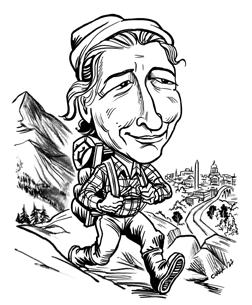
Mardy Murie grew up in Fairbanks, Alaska, the first boomtown of the Alaska gold rush. Always up for an adventure, Olaus Murie, field biologist for the Biological Survey (now Fish and Wildlife), caught her attention with his knowledge and passion for wild places and the animals that inhabit them. The two married and began a lifetime of adventure, exploration, research, and activism.
Come along as Mardy shares stories of their adventures through the Alaskan wilderness studying caribou and waterfowl. Watch her assert her place
beside Olaus as his field assistant where she gains vast skills and knowledge. Find awe in how she continues exploring as a mother with children in tow. Then notice the transition from field studies to activism, taking more adventures into interior Alaska to make recommendations about which areas should be preserved into Wilderness. When Olaus dies, mourn with Mardy and marvel at her strength as she chooses to continue their activism, moving from secretary to testifier at congressional hearings. Mardy often hosted small gatherings of learners at her home in Moose, WY. People of all ages came to discuss conservation with her, to hear her stories, and to learn from her. You are a small group of adults at one such gathering. The year is 1977.
Coral Conant Gilles, Storytelling Naturalist, accidentally became a storyteller while teaching environmental education in the Pacific Northwest in 2008. She now lives on land known to most as Madison, WI, but known to the Ho-Chunk people, from whom it was taken, as Teejop.
In 2014, Coral founded her own business. She uses storytelling and hands-on nature activities to inspire curiosity, empathy, and connection with ourselves, each other, and the natural world. Coral believes these are at the heart of healing within, in relationships, in our communities, and in the greater global community of human and non-human beings. Her work allows her to bring both subtlety and power to that which must be explored.
Coral has a B.S. in Biology, Psychology, and Environmental Studies. She continues to deepen into herself through studies in social justice, Indigenous knowledge, foraging, social-emotional development, deep nature connection, culture, equity, and story.
January 15, 17, 2023
4 PM, January 15
Marion Woodman (Laura Deal)
“The soul lives on metaphor because metaphor connects the eternal and the temporal worlds. The bridge between the eternal and the temporal is metaphor in art and in dreams. Therefore we have to bring the embodied soul into a place where it can be seen through art or heard through music or articulated through poetry.” - Marian Woodman
Marion Woodman (19282018) became a guiding light of Jungian studies through her struggles to heal anorexia nervosa in herself and eating disorders in others. After teaching high school for 20 years, Woodman reached a crisis at the age of 40 when she could no longer endure the anorexia from which she’d suffered her entire adult life. Her attempt at healing led her to study her dreams, undertake Jungian analysis, and become a Jungian analyst herself.
Woodman taught that humanity was in the process of developing a new conscious awareness, one that would require the healing of the relationship between inner feminine energies and inner masculine ones. Through her individual work with clients, as well as through workshops intended to educate a broader public, she expressed her concern for the ways in which humans consume resources and furthered her goal to make humanity more conscious of our collective impact on our environment.
From her childhood as a minister’s daughter and her love of Emily Dickenson’s poetry, to her embrace of the female aspects of God, her spiritual journey confirmed to her the importance of conscious feminine awareness and paying attention to the symbols that appear in dreams in waking life.
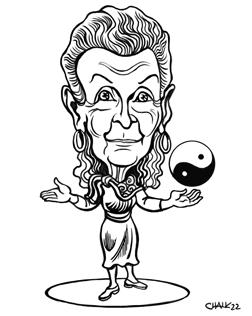
Laura Deal brings expertise to her Chautauqua presentation of Marion Woodman from her background as a scholar, dream worker, and
storyteller. She holds a Ph.D. in History from the University of Colorado at Boulder, and is certified through the Marin Institute for Projective Dream Work as a Dream Work Facilitator. She tells traditional, original, and personal tales to school children and adults. You can hear her stories on YouTube, the Story Story Podcast, the Apple Seed on BYU Radio, or on her CD, The Diffendaffer Taffy Cafe and Other Stories. She has appeared on storytelling festival stages (in person and online) from Utah to Virginia, and served as a mentor in several online storytelling camps through Youth Standing Strong Together. She has taught writing and creativity classes for more than ten years, and speaks about creativity, dreams, and metaphor. She’s the author of The Newcomer’s Guide to the Invisible Realm: A Journey through Dreams, Metaphor, and Imagination, and Marbles: New and Collected Poems.
7 PM, January 17
Carl Jung (Bruce Henderson)
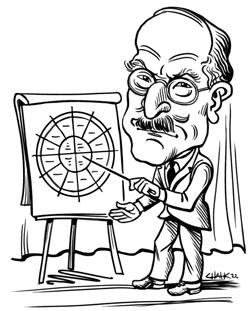
“Your vision will become clear only when you can look into your own heart. Who looks outside, dreams; who looks inside, awakes.”
Letter to Fanny Bowdich (October 22, 1916)
Along with Sigmund Freud, Carl Jung is considered one of the most influential innovators in psychology in the 20th century. Born in Switzerland to a pastor and his wife, Jung was trained as a physician and then as a psychoanalyst under Freud. He and Freud parted company over Freud’s single-minded insistence on infantile sexuality as the root of all adult psychology. Jung developed a broader sense of how human beings experience themselves and the world, which came to be known as analytical psychology. It is grounded in his belief in what he called “archetypes,” primordial forms that are universal aspects of the human journey to individuation, or becoming the self, symbols such as the persona, the shadow, and, encompassing the wholeness of the individual, the self. He also
created theories of contrasexual gender elements (i.e. the anima, the feminine side of men, and the animus, the masculine side of women, which, while revised today to reflect less binary understandings of gender, remain influential). He is also known for his theory of personality types, which were adapted for the highly influential Myers-Briggs Inventory, giving rise to such concepts as introversion and extraversion. Controversial during his lifetime for some questionable relationships with Nazism, it has recently been revealed that he served as a counteragent for the US and the Allies during World War II. He died in 1961.
Bruce Henderson is Professor Emeritus of Communication Studies at Ithaca College, where he taught for over thirty years, including five years as department chair and six as coordinator of the program in Culture and Communication. He also served for a semester as the Herron Faculty Endowed Professor of Communication at Villanova University. He received his B.S., M.A., and Ph.D. in Interpretation/Performance Studies at Northwestern University, where he also performed in numerous productions. He also holds the Ph.D. in Disability Studies from the University of Illinois at Chicago, and is currently enrolled in the M.A./Ph.D. program in Depth Psychology (Jungian and Archetypal Emphasis) at Pacifica Graduate Institute. He is the co-author with Carol Simpson Stern of two textbooks in performance studies and sole author of one in queer studies, as well as co-editor of a volume of essays on disability studies and performance studies; he is also past editor of Text and Performance Quarterly and Disability Studies Quarterly. His writing focuses on 20th and 21st century literature in English, currently emphasizing gay male literature and archetypal studies.He is a recipient of the Lilla A. Heston Award for Outstanding Scholarship in Interpretation and Performance Studies from the National Communication Association, the Lambda Award from the LGBT Caucus of that association, the Distinguished Service Award from the Performance Studies Division; he also received the Faculty Excellence Award from Ithaca College. He lives in Ithaca, NY, with his husband, the psychologist Daryl J. Bem.
January 29, 30, 31, 2023
Walt Whitman (Patrick Scully)
“Doubtless I could not have perceived the universe, or written one of my poems, if I had not freely given myself to comrades, to love.” - Walt Whitman

Patrick Scully presents Leaves of Grass summoning the spirit of America’s great poet, Walt Whitman. This show is about history, art, and literature - presenting aspects of Whitman’s life and work that are fascinating for our time, in which discussions of male/ male relations have moved into every section of the newspaper.
Leaves of Grass reflects Whitman’s utopian dreams, and his 19th century tribulations. It presents fascinating aspects of Whitman’s life, times and work. It pulls from history, art, literature, even opera. Whitman crafted clear strategies to deal with the social pressures and the consequences he faced for writing about taboo topics. This is a side of Whitman that few of us learned about in our American Literature classes. Some of these taboos have disappeared, others are still very relevant - such as relationships between men, and the forces that seek to deny them.
Scully reveals Whitman’s many sides: from the furtive—changing genders to “straighten things up”, to the fierce—defying the censors and getting banned in Boston. 200+ years after his birth. We see that Whitman is also an important artist for our era; a poet who loved America, and used his writing to strategically transform it.
Patrick Scully is a Minneapolis based performing artist, entrepreneur, and activist. Scully’s most current project is Leaves of Grass – Illuminated, marking a shift from autobiography, to biography.
Scully is known for work ranging from large scale group works to solo work. His largest works include: a Ballet for Boats, for forty to fifty boats, done to great critical acclaim in both Minneapolis (2015) and Potsdam, Germany (2010); His solo works, more intimate and often autobiographical, and also highly acclaimed, have included works ranging from Too Soon Lost (1990) to Thrive! (2010). Leaves of GrassIlluminated began as a large scale work for two actors and 18 male dancers in 2014. It has has been finely honed into this one man show.
Scully began dancing in 1972 in college. In 1976 he co-founded Contactworks, a dance collective focused on contact improvisation. He danced with Remy Charlip, beginning with Remy’s Ten Men show in the Brooklyn Academy of Music’s Next Wave Festival in 1984.
Performing his own work, Scully has toured internationally receiving awards and kudos: “A fresh thoroughly entertaining evening of theater performed by a gifted original.” - NYTimes Patrick is the founder, long time director of Patrick’s Cabaret, in Minneapolis.
“It has been spread abroad that ‘Uncle Tom is coming,’ and that is what has brought you here. Now allow me to say that my name is not Tom, and never was Tom, and that I do not want to have any other name inserted in the newspapers for me but my own. My name is Josiah Henson, always was, and always will be. I never change my colors. I would not if I could, and could not if I would.” - Josiah Henson
Although best known as one of the bases for Harriet Beecher Stowe’s “Uncle Tom,” Josiah Henson can be understood as a Methodist circuit-rider who
believed even slave owners could receive redemption through repudiating slavery. Henson appeared popularly late in life using his story as a Canadian abolitionist to extoll the virtues of redemption of Americans of West African and of European descent by saving their souls from slavery.

Eric Robinson graduated from Howard University (BA, 1987) and from the University of Missouri-Columbia (MA, 1989). He has presented the Underground Railroad tour of Alton, Illinois, since 1995, drawing groups from around the world. His tours have been featured in the New York Times, on the BBC World Service, and in the docuseries “Underground Railroad Secrets,” aired on Science/Discovery channels and on PBS. He is an assistant professor of history at the University of Health Sciences and Pharmacy in St. Louis.
Richard Wright (Darryl Wellington) “At the age of twelve, before I had had one full year of formal schooling, I had...a conviction that the meaning of living came only when one was struggling to wring a meaning out of meaningless suffering.” - Richard Wright, ‘Black Boy’
Richard Wright was a preeminent American writer. Author of the novel Native Son (1940) and the autobiography Black Boy (1945) Wright pioneered an influential school of protest literature. He became the first Black writer to pen a bestseller selection that overtly criticized white supremacy. Wright’s meteoric career is particularly noteworthy given his
beginnings. Born into dire poverty and oppression in segregated Mississippi, his journey to international success was so unlikely that upon meeting him the most famous sociologist of the 1940’s asked, “How in hell did YOU happen?” Following his success, Wright grew disillusioned with the United States, and relocated to France. Before his early death at age 52, he coined the phrase “Black Power” in support of African anti-colonial revolutions. Darryl Lorenzo Wellington recreates Wright’s final days — when the tenacious writer was beleaguered by both the American and the French governments because of his commitment to international justice— delivering a lecture to an American audience in Paris.
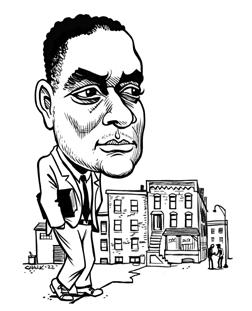
Born in Savannah, Georgia, and a long-time resident of Charleston, South Carolina, before relocating to the Southwest, Darryl Lorenzo Wellington is the 2001-2023 Santa Fe, NM Poet Laureate. His fulllength poetry collection is Psalms at the Present Time (Flowstone Press, 2021)
He is also a journalist and essayist whose articles have appeared internationally. His best-known articles include “New Orleans: A Right to Return” a lengthy exploration of repatriation issues following Hurricane Katrina (Dissent magazine) “The Twisted Business of Donating Plasma” an expose of the plasma industry (The Atlantic) and “Reality Publishing” a philosophical reexamination of the Amazon publishing phenomenon (N+1 magazine).
He is a playwright and performance artist, who has appeared on the Tavis Smiley radio show. His work in poetry, prose and performance centers on political and social movements, economic justice, civil rights history and race relations.
February 5, 6, 7, 2023
4 PM, February 5 - Kasturba Gandhi (Roopa Mohan)
“Live as if you were to die tomorrow. Learn as if you were to live forever.” - Kasturba Gandhi
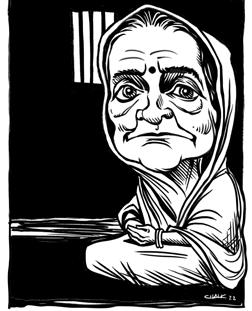
Roopa Mohan will be taking you on a storytelling journey to help you appreciate the remarkable life and achievements of Kasturba, the wife of Mahatma Gandhi, father of modern India. Gandhi is globally recognised and revered but how much do we know about his wife of over 6 decades, Kasturba?
Who was she as a person? Was she merely Gandhi’s shadow during his historic non-violent struggle against colonial rule in South Africa andIndia? What did she contribute to these efforts? What were the personal sacrifices she had to make along the way?
Roopa will portray Kasturba, as she travels from India, to South Africa, and finally back to India. You will witness Kasturba’s transition from a child bride at the age of 13 to a busy mother and social activist, adopting a spartan life to serve the poor and downtrodden. You will follow her as she emerges as a quiet leader, running settlements and going to prison for peacefully protesting against racial discrimination. You will see her inspire thousands of Indian women to join the Satyagraha (truth force) movement …..promoting social equality, nonviolence and self-sufficiency.
Roopa Mohan is a professional storyteller from Walnut Creek, CA. She got started as a volunteer at the Asian Art Museum, SF telling folktales and myths to school groups and leading docent tours around the artifacts. She has since expanded her repertoire to personal narratives from her childhood in South India and her early immigrant experiences here.
Roopa enjoys trying new story genres, with audiences ranging from preschoolers to adults. She is currently working on portrayals of female freedom fighters and trailblazers from her culture, who have been long forgotten or ignored. Her stories are
usually embellished with expressions and gestures from South Indian dance.
Roopa serves on the Board of the Storytelling Association of CA and currently leads a project to bring stories to underserved schools. She is an active member of Asian American Storytellers in Unity, contributing to their Storytopia series on YouTube.
Roopa has participated in many programs organised by The National Storytelling Network, Eth-Noh-Tec, Stagebridge, Marsh, Better Said Than Done and Six Feet Apart Productions. She performs at schools and libraries, both virtually and in person.
Roopa worked for many years as a domestic violence advocate and is passionate about women’s rights and empowerment.
7 PM, February 6
Frances Perkins (Jarice Hanson)
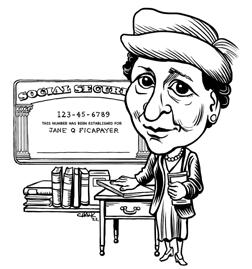
“Being a woman has only bothered me in climbing trees.” - Frances Perkins
Frances Perkins, (18801965) the first woman Secretary of Labor, tirelessly advocated for the democratic ideals of the New Deal legislation of Franklin Delano Roosevelt. Though best known for her crafting of the Social Security Act, 40-hour work week, child labor laws, the success of lifting the country out of the Depression and advocating for immigrants, labor unions, and women throughout WWII, Perkins demonstrated a unique form of political savvy and progressive politics as a social reformer and humanitarian.
This presentation focuses on her awakening as an activist when she attended Mount Holyoke College led her to become a social worker. When she witnessed the Triangle Shirtwaist Factory Fire in
1911, she committed herself to improve the working lives of all Americans by finding solutions to the social problems of the day. Many of the problems she encountered bear an uncanny resemblance to contemporary social conditions in the United States. Miss Perkins’ personal sacrifices and deep spirituality demonstrate how every individual has a role to play in making democracy work, and how her belief that “a government should aim to give all the people under its jurisdiction the best possible life” unites us with a common purpose.
Jarice Hanson is a Professor Emerita of Communication at the University of Massachusetts – Amherst. She is also a member of Actors’ Equity (AEA) and the Screen Actors’ Guild (SAG-AFTRA). In addition to her scholarly research, she has written documentaries and hosted/produced public television programs at WGBY (Springfield, MA) and WHYY (Philadelphia). She delights in bringing strong women leaders to the stage to remind audiences about the lessons women have taught us over the years.
“Frances Perkins: A Woman’s Work” tells the story of the first woman to hold a Cabinet position—Secretary of Labor Perkins, whose sacrifices and leadership ushered in a range of progressive social reforms in the first half of the 20th Century and who overcame the burden of being “the first” woman in the U.S. government from the Depression, the “New Deal” era, through WWII. Miss Perkins’ story shows her philosophy, faith, and resilience to “be not afraid” to challenge dominant structures to create lasting, meaningful, social change.
Michael Mooney (James Walsh) “I don’t know that the whole American flag covers me, but I think that I have a corner.” - Michael Mooney
Michael Mooney immigrated to the U.S. from Dublin, Ireland as a teenager, eventually making his way to the silver mines of Leadville, Colorado during one of the largest silver booms in North American history.
In May of 1880, 5,000 miners walked out of the Leadville mines after they were ordered not to talk on the job, launching one of the largest strikes in Colorado history. Mooney was chosen by the miners as their leader. Largely uneducated, but a gifted orator, he was known for his ability to keep the men disciplined and nonviolent. When Martial Law was declared and the National Guard crushed the strike by arresting striking miners, Mooney was black listed from mining work and eventually exiled from Leadville. He drifted across the American West, continuing to speak out on behalf of industrial workers. Once proclaiming “I may not have the whole American flag, but I think I have earned a corner of it,” Mooney symbolized the struggles that Irish immigrants faced in late 19th century America, relegated in places such as Leadville to industrial labor. It also demonstrates that Irish immigrants brought with them traditions of resistance to occupation and labor exploitation, which were practiced throughout North America. Finally, this monologue is a tribute to the early years of the American labor movement, which is undergoing a renewed surge in the U.S. This presentation recreates the speech that Mooney gave during the strike at a Denver union hall. Following the speech, he was arrested on his way out of the hall.
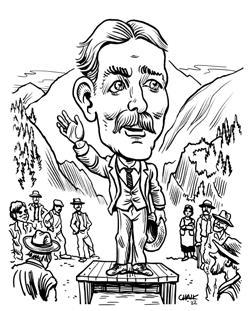
James Walsh, PhD, is a Clinical Associate Professor in the Political Science Dept. at the University of Colorado Denver, where he has taught for the past 25 years, specializing in American Labor, Immigration, and Irish Diasporic History and Politics. Walsh is co-author of Irish Denver and author of A Pauper Cemetery at 10,200 Feet and the Story of the Leadville Irish. He founded the Romero Theater Troupe eighteen years ago, a social justice oriented all-volunteer community, organic theater that uses the stage to preserve and tell unknown stories of working.
Have you considered submitting a piece to HumanitiesND Magazine? If not, would you consider it if you had help? Not terribly long ago, someone told me that she had thought about writing an article for us but had decided against it because she didn’t know how to go about it or fully understand what we’d expect. Perhaps you’ve never written anything for publication but have a genuine desire to comment on issues from time to time or to reflect on a situation that’s important to you. I suspect that some people may be a bit intimidated by the thought of a review process that decides on articles that get published, or perhaps you’ve already published in another venue but are unsure about our review process. Or you might feel you’re a bit rusty because you haven’t written or published anything for a while. No matter your situation, we’re looking for YOU and would very much like to demystify the process so that you could potentially get to see your ideas and your name in print.
We’re looking for YOU and would very much like to demystify the process so that you could potentially see your ideas and your name in print.
Here at Humanities ND, the staff is already in full planning mode for the coming year. In addition to courses and author discussions and all the many high-quality programs and events you’ve come to expect, we’ll also continue, as we have for a long while, to publish our magazine four times next year. As longtime members, supporters, and readers of the magazine already know, two of them are “program” issues that reveal and comment on the programs that are heavily concentrated in the first part of the year or in the second half. Generally, these issues arrive in January for the spring semester and during the summer for fall program announcements. Oftentimes, the instructor of a class will write an article about the nature of the class or reflect on the topic being covered, a kind of “teaser” for potential students. In these issues, readers gain access to information about courses as well as all the other event information that can help to shape their calendars.
Two issues each year take on a different task altogether. In the “Gray Matters” issue, like the one in which this piece appears, we ask for submissions that involve the exploration of the mind, the big thoughts and concerns that look more deeply, more significantly, at issues that reflect and affect the human condition in all areas of human endeavor. After all, that’s the business of the humanities in general. The other, our “Sense of Place” issue, explores more specifically the space we inhabit, the way we look at where we locate ourselves—geographically, emotionally, intellectually—especially as it relates to life in North Dakota.
In all cases, we look for clear thinking demonstrated in and by the writing we select, writing that supports a point the writer wants to make and, more importantly, writing that provides direct insight on issues to which a wide audience can relate. We look at the writer’s style, of course, and just how readable it is. We also look carefully at how the writer supports the point—with germane personal experience or with specific
study—and how well the writer explains how this experience or study applies to that point. Our readers expect nothing less.
Particularly in the “Sense of Place” issue, we encourage submissions from poets and short story writers, from people who write creative nonfiction, but we absolutely rely on our usual essay-writers—we treasure their reflections on life, recollections of earlier times, commentary on our current condition, and considerations for the future of life on the northern plains, all of which demonstrate a thoughtful approach to the topic and careful development of the idea under discussion.
In all cases, we always, always want to provide a connection to issues of history, literature, art, philosophy, film, languages, area/ethnic studies, culture—to human existence writ LARGE. After all, that’s the work of the humanities: to study human society and culture in all its forms. Your participation can only enhance our output.
Perhaps you’ve read an issue of the magazine and thought, “I could write something like that,” or “My experience parallels this writer’s,” or “I don’t agree with the writer’s position on this issue.” If so, you may already have identified a topic for exploration and have begun to develop some ideas that you’d like to share.
If you’d like more information on how we operate; if you’re an instructor of a course offered by Humanities ND and would like to spice up your writing; if you’d like to submit a piece you’ve written for our review but haven’t yet submitted; if you have a germ of an idea at work even now but haven’t fully developed it; if you’re simply curious about how we put the magazine together, let me invite you to join us for a Zoom workshop class in early January, just before the submissions deadline for our “Sense of Place” issue in midFebruary.
Over the space of two Wednesday early evenings in January (5 January, and 19 January, from 5-7 p.m. CST), I will offer a program called, fittingly, “The Write Stuff,” in which we will explore
submission criteria, germinate a few ideas for publication, and share some written work with each other, as I offer some “pro” tips on how to polish and improve your writing—wherever you may be as a writer or in the writing process; it matters not.

It’s important to note here that both sessions constitute the course; and, because it will follow a workshop format, the expectation is that you’ll attend both and make contributions to the writing and discussion process. Please don’t worry if you’ve never taken a writing course. It is not necessary for you to be fully formed as a writer to enjoy the course and, perhaps, to become someone who ultimately has a piece published with us.
While I can’t guarantee that, as a result of this one workshop, your work will automatically find a home in HumanitiesND Magazine, my hope is that joining in this process will encourage you to plan a bit more intentionally to submit a piece to the magazine. Consider this a personal invitation to join me, and feel free to invite others. I promise that this experience will NOT be intimidating, and it may even be a bit of fun. I hope to see you in January. l
REBECCA CHALMERS has spent her adult life on the study of literature. A Ph.D. in English (with concentrations in American literature, film studies, and critical theory) led her to a rich and rewarding academic career, the last thirteen years of which were spent with the English program at the University of Mary in Bismarck, and in regular work with the Humanities North Dakota. Currently, she resides on the Eastern Shore of Maryland where she works as an independent scholar, with occasional university classes, and in freelance editing and writing, all while she continues to pen her own poetry and short stories.
t w o e v e n i n g WORKSHOP WORKSHOP w r i t i n g f o r h n d m a g a z i n e
That’s the work of the humanities: to study human society and culture in all its forms. Your participation can only enhance our output.
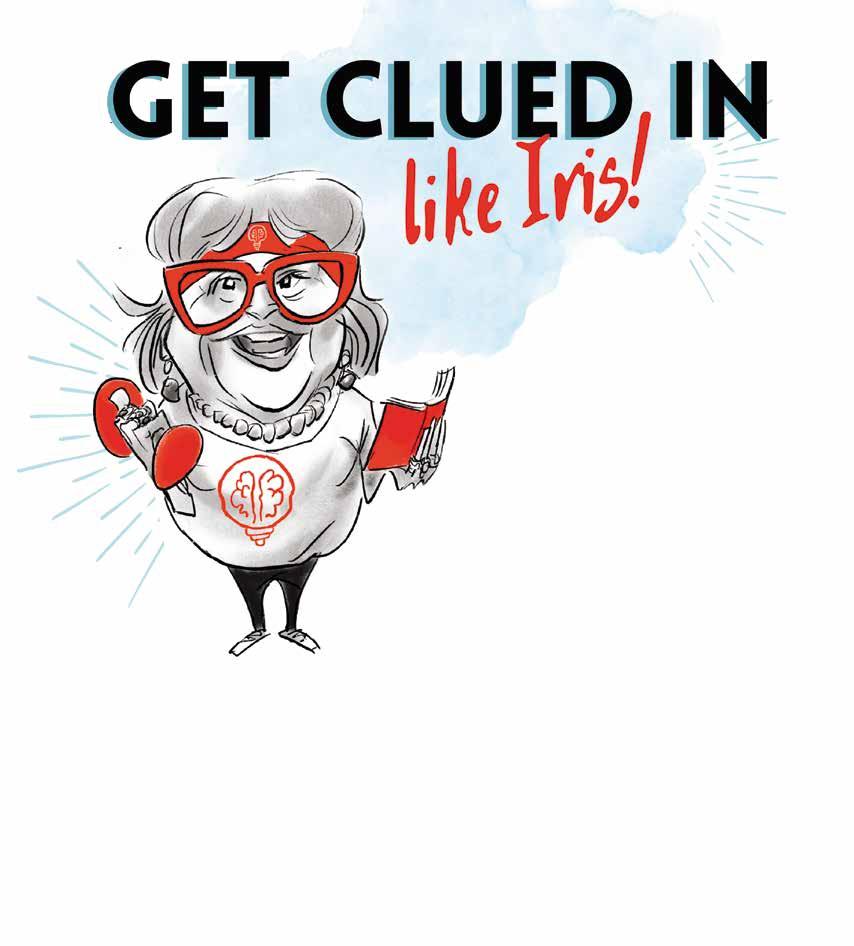
$5,000 and above
Bush Foundation
The Andrew W. Mellon Foundation National Endowment for the Humanities Charles Hudson, in memory of mother Marilyn Hudson North Dakota Department of Public Instruction Bravera Bank Big Stone Giving Fund Paris Family Foundation Bismarck State College - Bringing Humanities To Life
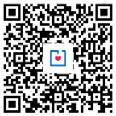
North Dakota Council on the Arts Arts Midwest David & Karla Ehlis
North Dakota Council on the Arts Angela S. Gorder Federation of State Humanities Councils Jamie Stewart
$500 - $999 Rita Erdrich
Lyle G. Best
Mark Holman
Jerod Tufte
Sonja Prestangen
Rachel Asleson
Della & Wayne Martinsen
Lynette Lahren
Jessica Rockeman
Mary Cochran
Amanda Mack
Kaye Carlson
Larry R. Peterson
Hamzat Koriko
Megan Sletten
Ronald Ellingson
Kylie M. Oversen & Brian Balstad
Mark & Gale Holm
Jane Williams
Mary & James MacArthur
Denise Steinbach
Cameron & Jan Dodge
Corrine Redmond
Michael & Nancy Farbo
Brenda Kay Marshall
Bruce & Lorraine Furness
William & Joanne Hodny
Cami Dixon
Stewart W. Herman
Nancy Lervik
Robert & Lona Getz
Ryan & Nicole Taylor
Orrin DeLong
John Sakariassen
Elizabeth Sund
William R. Caraher
Carole Barrett
Ann Crews Melton
Kim Crowley
Edward Andonian
Theresa Romero
Bill Willis
Tove Mandingo
Jennifer Williams
Janice M. Schultz
Lynn D. & Mary Bueling
West Fargo Public Library
Paul & Linda Schadewald
Eleanor & Bill Goodall
Bottineau County Public Library
Amy Nelson
Dorothy Lick
Erin Laverdure
Kayla A. Schmidt
Hariett Davis
Lillian Crook
Barbara J. Evanson
Erin R. Kitzman
Howard W. Langemo
Gerald M. Skogely
Rebecca Esades
Paul H. Koetz
Jill Brandt
Janell Marmon
Betty Axtman
Leah Hummel
Rachel A. Johnson
AmazonSmile Foundation
Linda M. Steve
Barbara Solberg
Rebecca S. Thiem
Gary Eller
Wayne Beyer
Mary Maring
Denise Lajimodiere
Prairie Rose Seminole
Judith A. Maxson
Ervin & Lori Bren
Anonymous Donor
Madelyn Camrud
Dina Butcher
Beth & Tim Huseth
Susan Helgeland
James & Mary Olson
Margaret Hagler
Ceil Anne Clement
Christine Kujawa
Brenna L. Gerhardt
James & Gail Sperry
Humanity is messy and so are our offices. Because of this, we occasionally misspell or omit a donor’s name. If you are the recipient of our human frailty, please let us know so we can learn from our mistakes and correct our errors.
Dennis Cooley, Fargo
Linda Steve, Dickinson
Lyle Best, Watford City
Dina Butcher, Bismarck
Harley Engelman, Bismarck
Angela S. Gorder, Bottineau
Jessica Rockeman, Richardton
20th, Fargo i s a m o r t i c i a n , a d v o c a t e , a n d b ê t e n o i r e o f t h e t r a d i t i o n a l f u n e r a l i n d u s t r y . H e r e d u c a t i o n a l w e b s e r i e s " A s k a M o r t i c i a n " h a s b e e n v i e w e d a l m o s t 2 5 0 m i l l i o n t i m e s a n d a l l t h r e e o f h e r b o o k s w e r e N e w Y o r k T i m e s b e s t s e l l e r s . S h e f o u n d e d a L o s A n g e l e s f u n e r a l h o m e a s w e l l a s t h e f u n e r a l r e f o r m c o l l e c t i v e " T h e O r d e r o f t h e G o o d D e a t h " , w h i c h s p a w n e d t h e d e a t h p o s i t i v e m o v e m e n t .
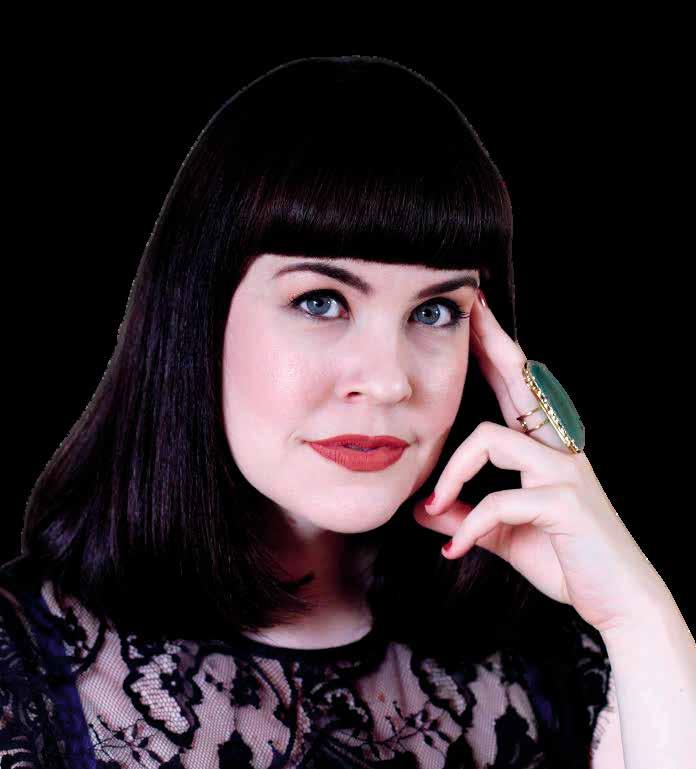
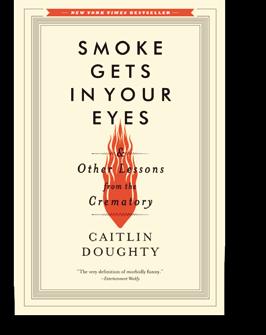
h u m a n i t i e s n d . o r g / e
s r e g i s t e r
e
418 E. Broadway, Suite 8


Bismarck, ND 58501
